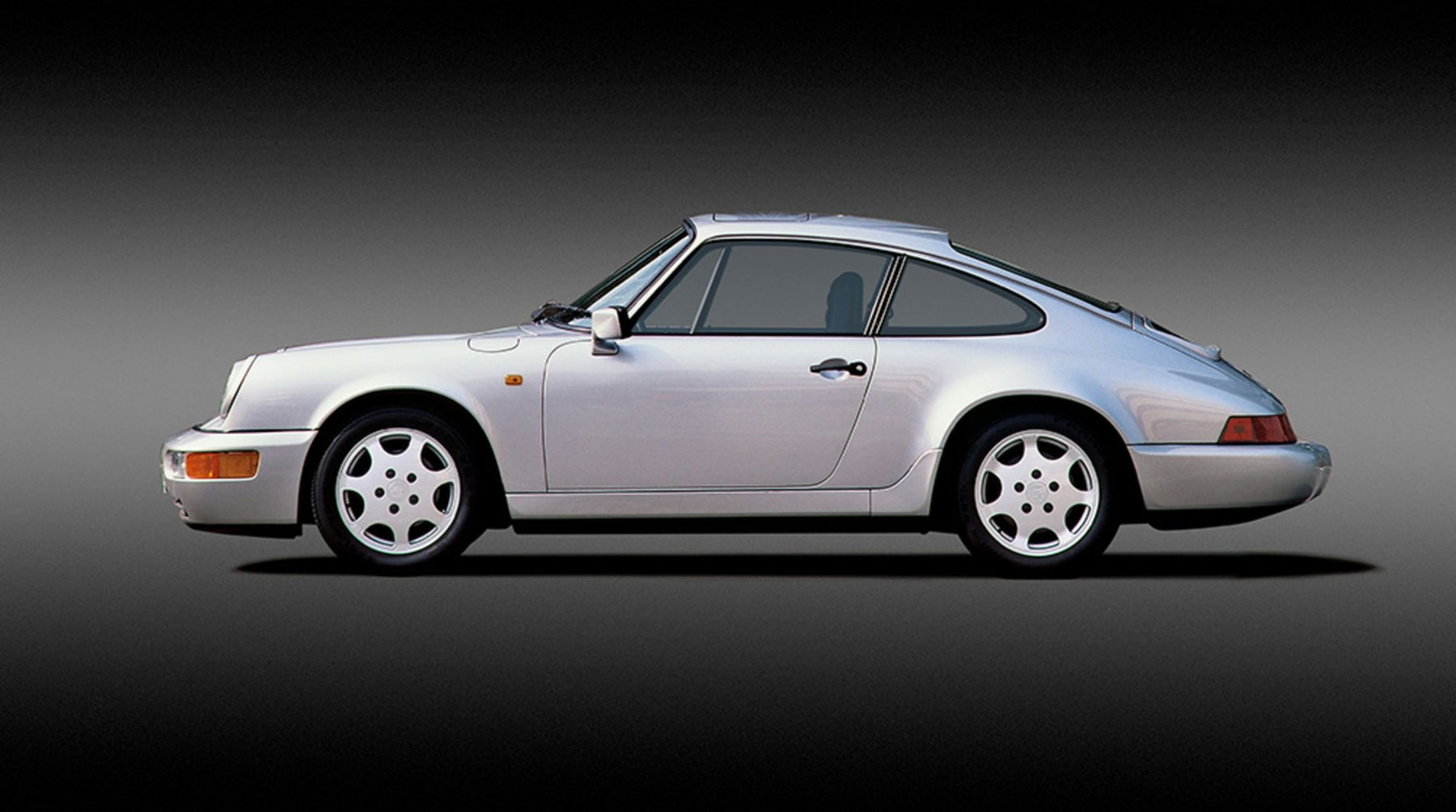
With the Porsche 964, the Zuffenhausen-based company brought the iconic 911 design into the 1990s. The third generation of the Porsche 911 continued to rely on the proven concept of an air-cooled flat-six engine in the rear but introduced numerous technical innovations. The 2+2-seater sports car was launched for the 1989 model year and was produced until 1993. It was available as a Coupe, Targa, Cabriolet and Speedster. And with only 63,762 units built, the third 911 generation is the rarest.
By the mid-1980s, it was becoming increasingly clear that the second generation of the Porsche 911, the G-Model, was overdue for an update. The G-Model relied on outdated technology, such as the torsion bar suspension at the rear axle. Various necessary innovations — partly due to legal requirements and partly for comfort — could no longer be implemented within the 25-year-old concept of the 911. At the same time, sales figures for the 911 and 928 were at best constant, with no growth in sight.
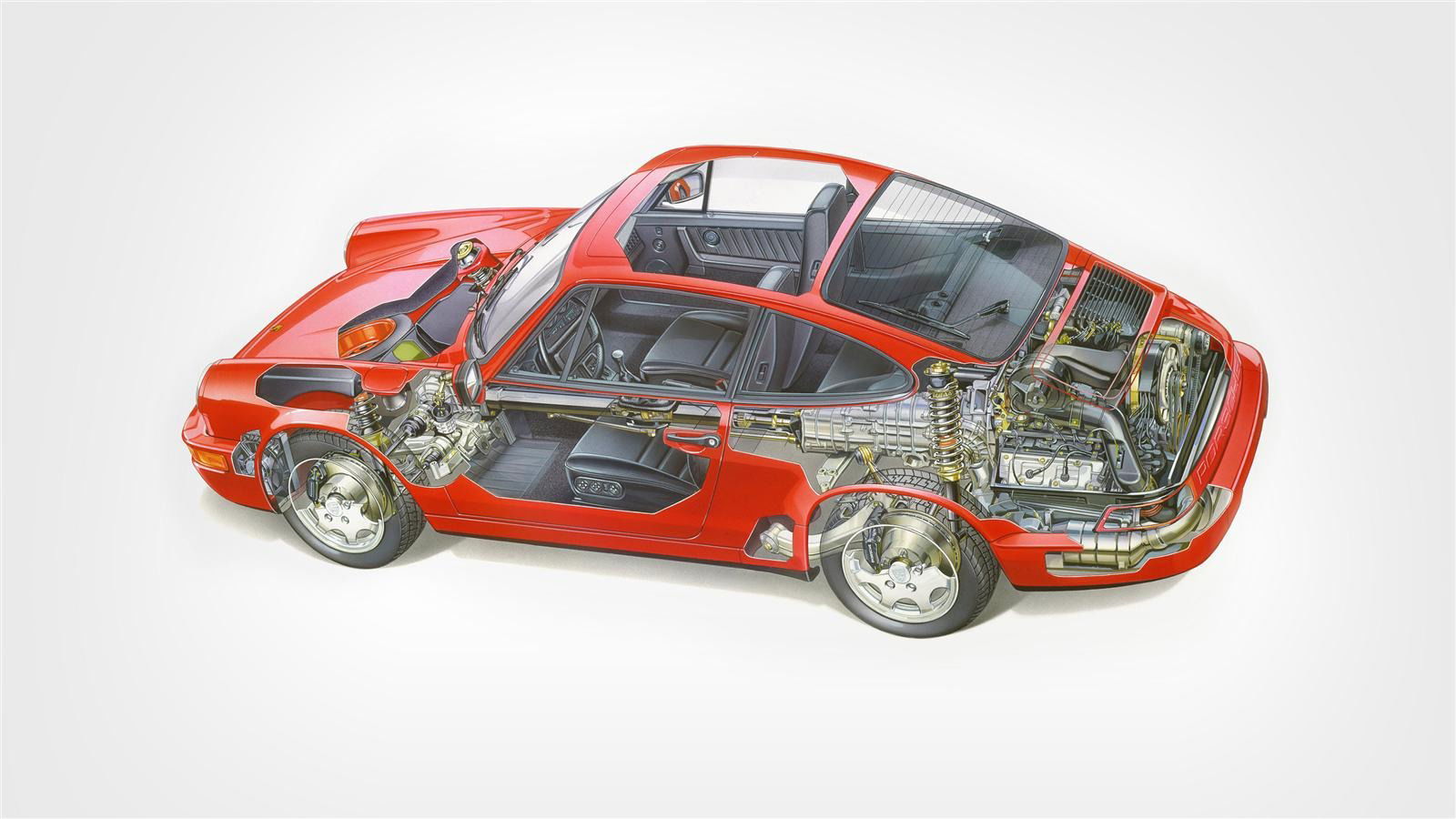
In 1984, development of the G-Model successor, designated Type 964, began. The goal was to meet the growing comfort demands of customers without diluting the Porsche 911 DNA. Paul Frère summarized customer requirements as follows: “better summer and winter climate control and a reduction in rolling noise.” Porsche itself outlined several requirements that necessitated a complete redevelopment: ABS, reduced drag and lift without using a fixed spoiler, and above all, all-wheel drive.
Designer Ben Dimson faced a challenging task. The iconic 911 silhouette was to remain largely unchanged but simultaneously modernized. While the dimensions and wheelbase of the car stayed mostly the same, Dimson integrated the front and rear bumpers fully into the design. As a result, the 964 became about four centimeters shorter, while width and height remained virtually unchanged. Porsche also designed the rain gutters to be more aerodynamic compared to the previous model.
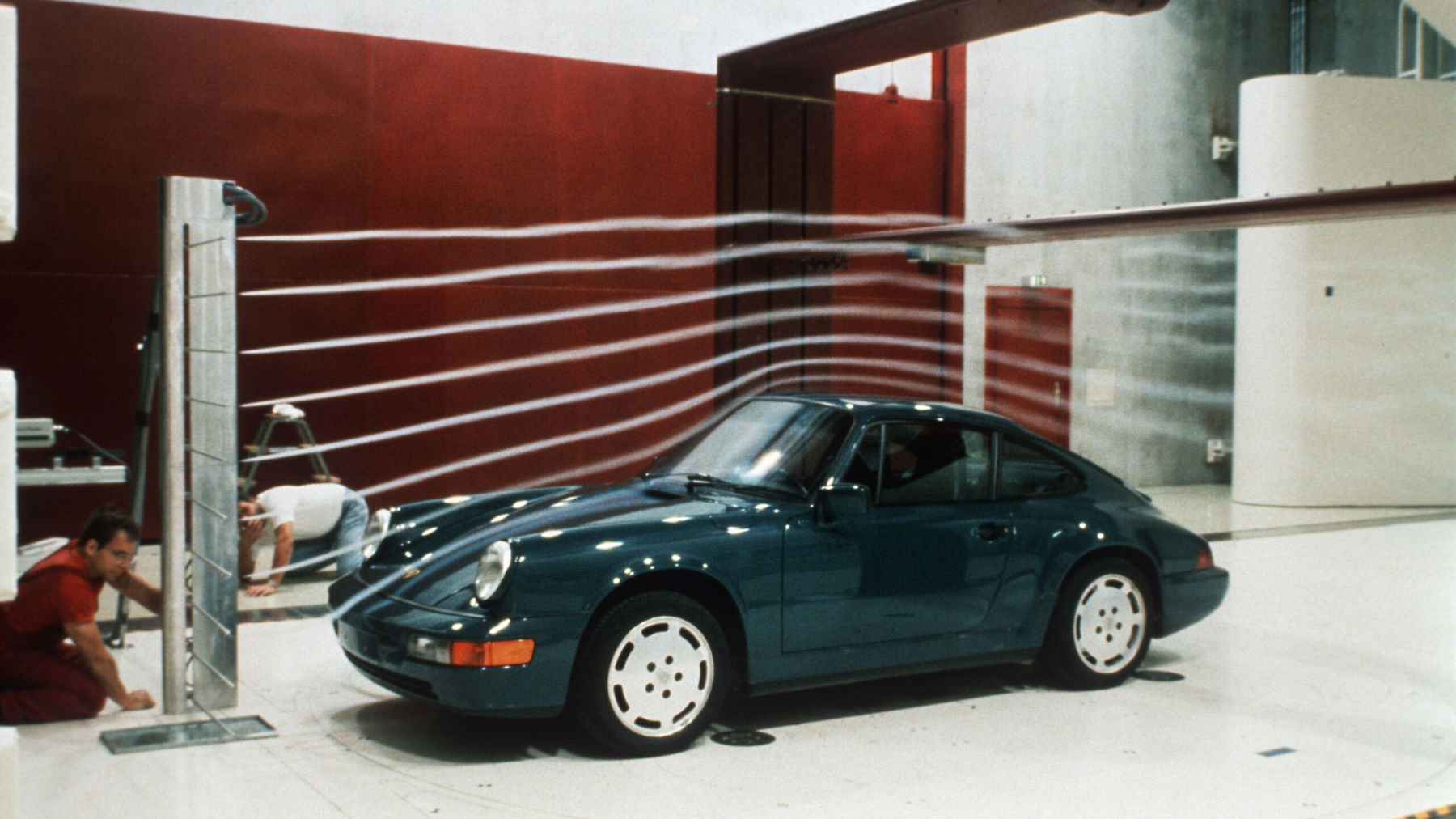
New to the design was the plastic air intake grille on the engine lid, which also functioned as a rear spoiler. This spoiler automatically extended at 80 km/h via an electric motor and retracted when the speed dropped below 10 kph. It reduced rear-end lift and simultaneously improved airflow in the engine compartment. The light band below the spoiler became a recurring design element for the Porsche 911 over the decades.
A significant part of the aerodynamic improvements was made to the vehicle’s underbody. Porsche implemented a smooth paneling from the front to the rear, partially shielding the suspension. This four-piece plastic covering allowed for a faster, less turbulent airflow under the car. Consequently, it reduced the aerodynamic lift and lowered the drag coefficient (cW value) from 0.42 to 0.32 — a remarkable 25% reduction.
While the new body design of the Porsche 964 differed only slightly from its predecessor, significant changes were made beneath the surface. For instance, the suspension design had to be reworked to accommodate the necessary wheel-speed sensors and additional drive shafts. These sensors were prerequisites for both the standard Anti-lock Braking System (ABS) in all Porsche 964 models and the dynamic all-wheel-drive system in the Carrera 4 variants. This also marked a departure from the torsion bar suspension on the rear axle in favor of more modern coil springs and lightweight aluminum control arms. Besides reducing costs and weight, this change significantly diminished rolling noise on rough surfaces.
The introduction of ABS and all-wheel drive in the Porsche 964 required not only a revision of the suspension but also an increase in the central tunnel height.
The permanent all-wheel-drive system was based on a principle developed for the Porsche 959 supercar. This revolutionary concept utilized electronic torque distribution, typically sending 31% of the drive force to the front wheels and 69% to the rear. Depending on the driving situation, Porsche’s Dynamic All-Wheel Drive System (PDAS) could variably adjust the distribution seamlessly. Additionally, Porsche developed a “traction program” to aid in challenging conditions. Using a rotary switch in the center console, all differentials could be locked at speeds of up to 40 kph.
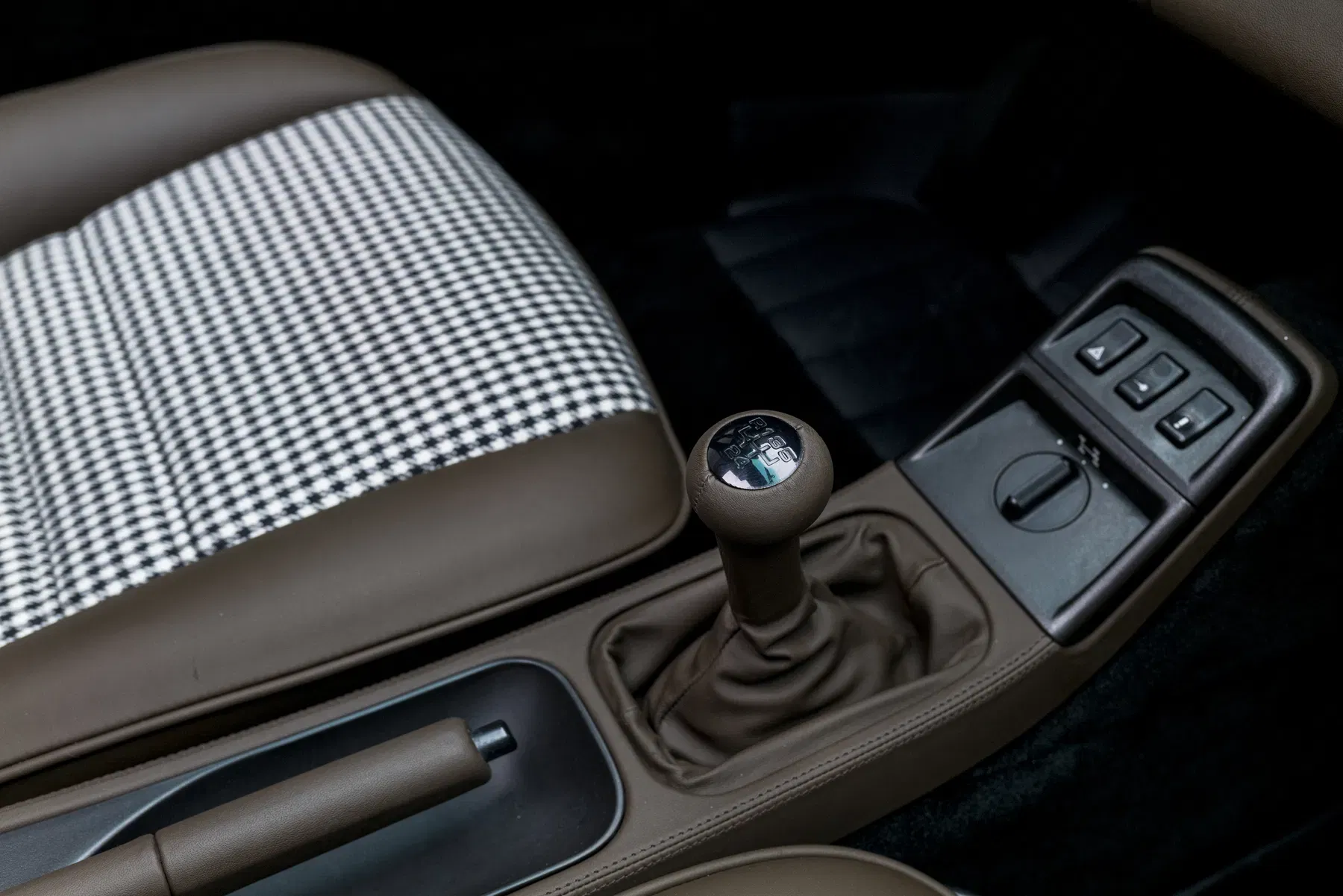
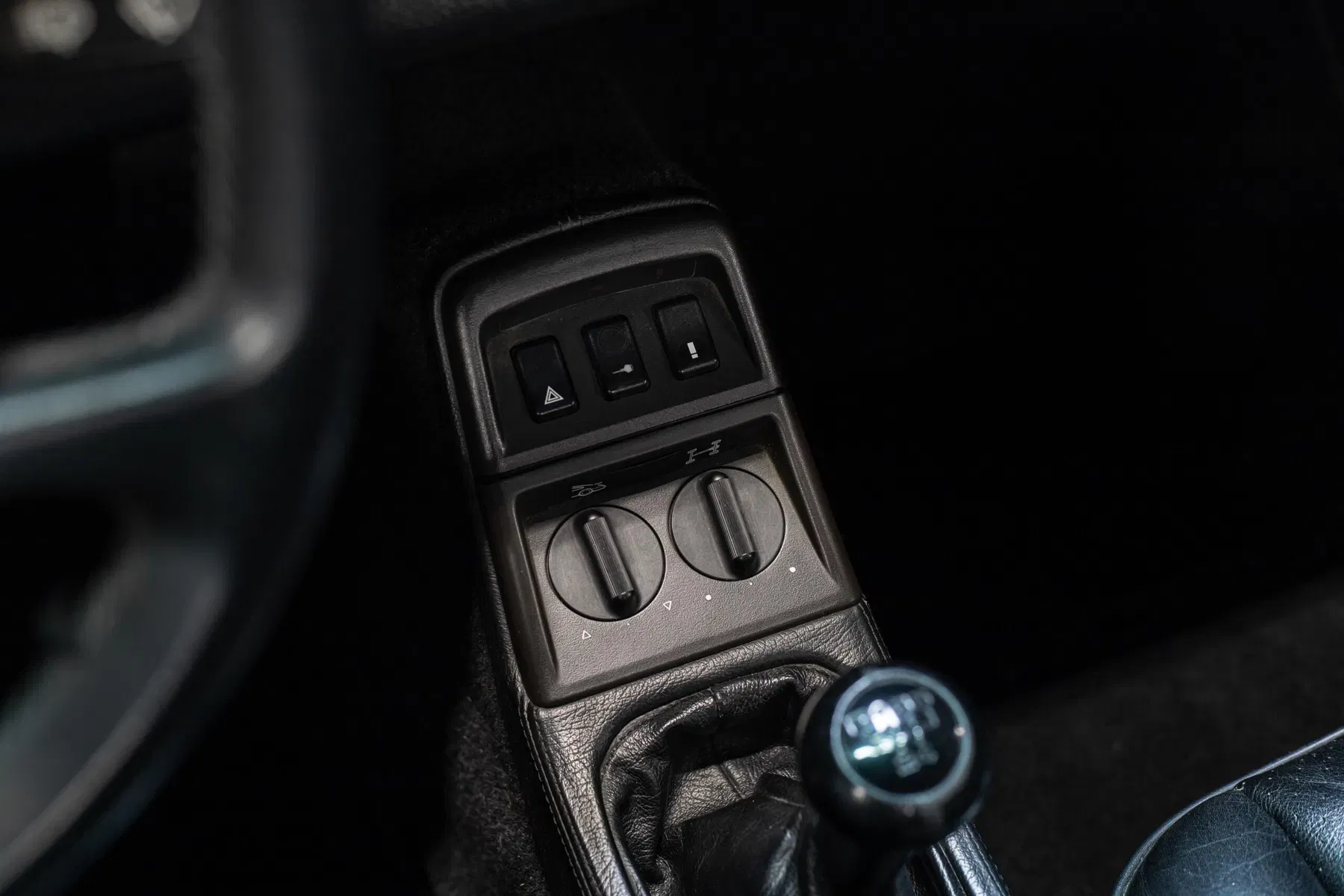
The all-wheel-drive system also required a higher central tunnel to accommodate a transaxle shaft that transferred drive force from the rear engine to the front wheels. While the rest of the underbody paneling was made of plastic, Porsche used a steel plate here. This plate not only enhanced aerodynamics but also increased the torsional stiffness of the chassis.
The Porsche 964 was the first 911 to feature power-assisted steering, making tight turns and parking maneuvers significantly easier. Another contemporary innovation arrived in 1990 with the introduction of a fully automated gearbox. However, the four-speed torque-converter automatic built by ZF had a unique feature: the so-called Tiptronic mode allowed manual gear changes by pushing or pulling the gear selector when it was moved to the right shift gate.
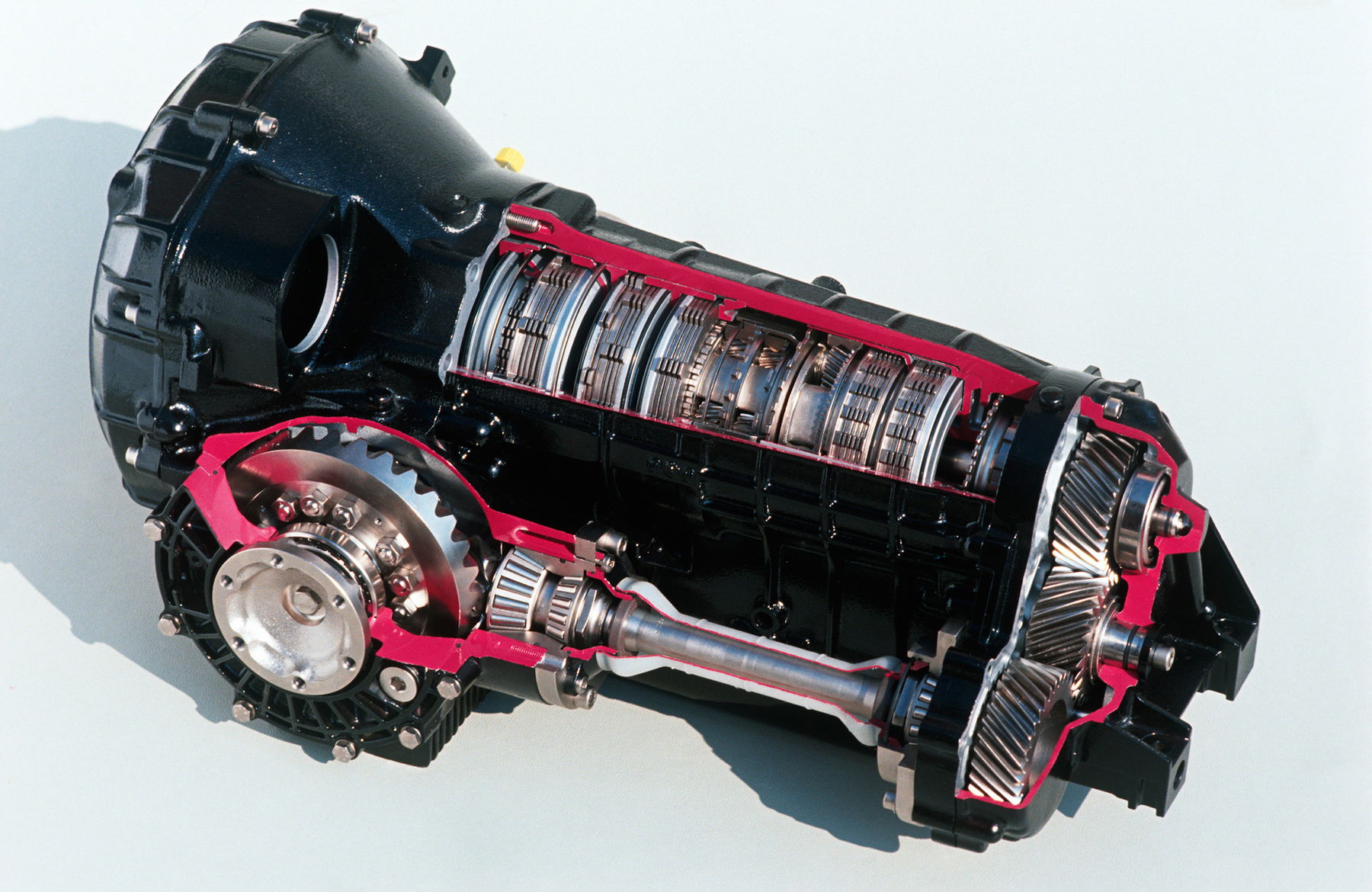
Porsche proudly emphasized that, despite the relatively similar appearance, almost 85% of all parts in the 964 were newly developed. This included the Carrera engine. Instead of 3.2 liters, the third generation of the Porsche 911 in its base version featured 3.6 liters of displacement. Porsche also applied technical expertise from motorsport and the development of PFM 3200 aircraft engines, which utilized two independent ignition systems for increased safety through redundancy.
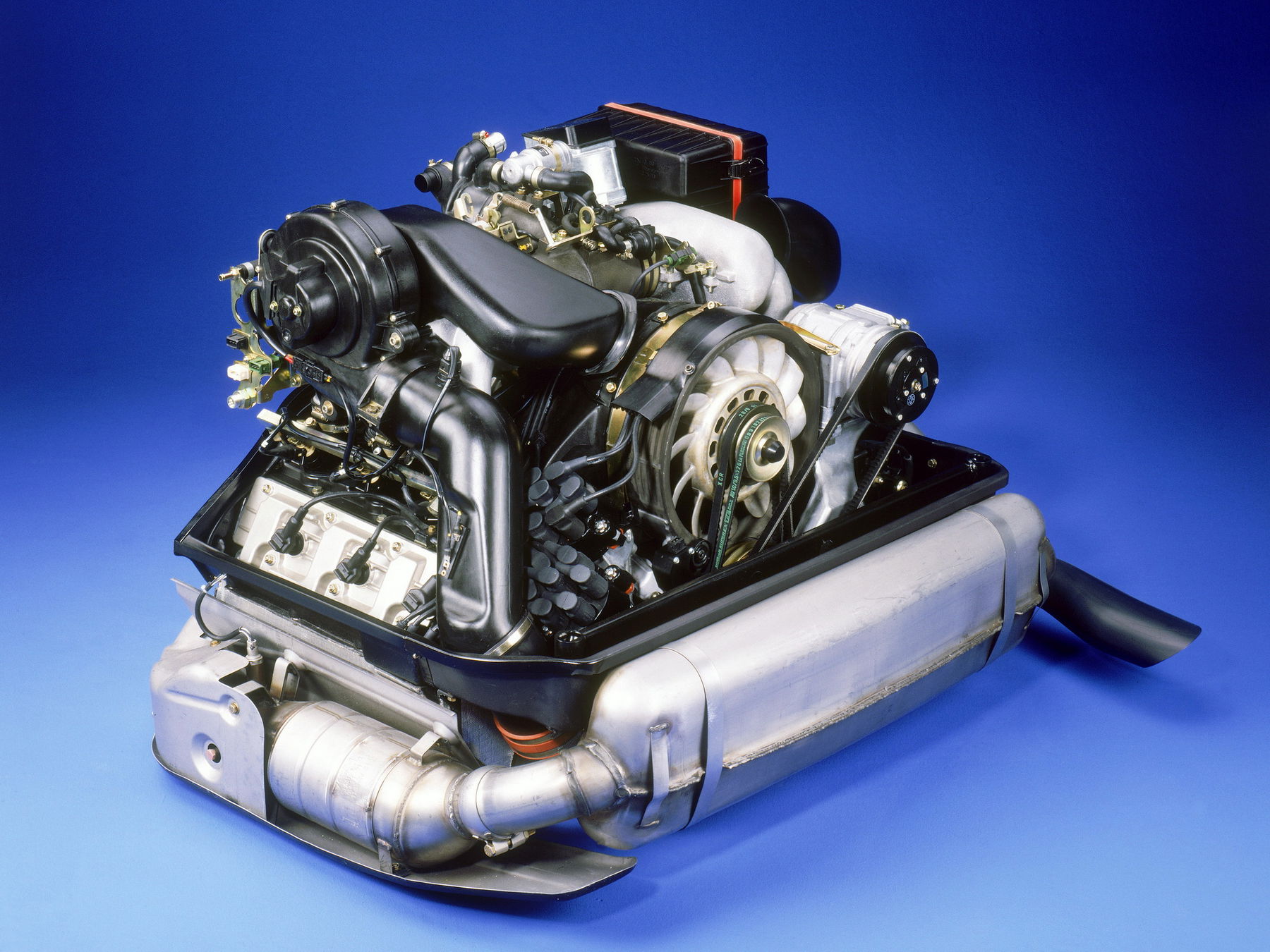
Porsche adapted this dual ignition system to improve combustion in the M64 engine. The additional distributor was driven by a toothed belt from the primary distributor. Porsche had initially considered using cylinder heads with four valves per cylinder. However, due to thermal issues, which persisted even in later models like the 993, Porsche decided against it and instead implemented dual ignition.
Progress was also made in the area of emission control. The Porsche 964 Carrera was the first production car to feature a regulated metal catalytic converter. Unlike the ceramic catalytic converters commonly used at the time, the metal cat helped reduce exhaust backpressure. To further optimize pollutant reduction, special “ceramic port liners” were installed in the exhaust ports of the combustion chambers. These ensured the exhaust gases reached the catalytic converter at a higher temperature while reducing heat transfer to the cylinder heads.
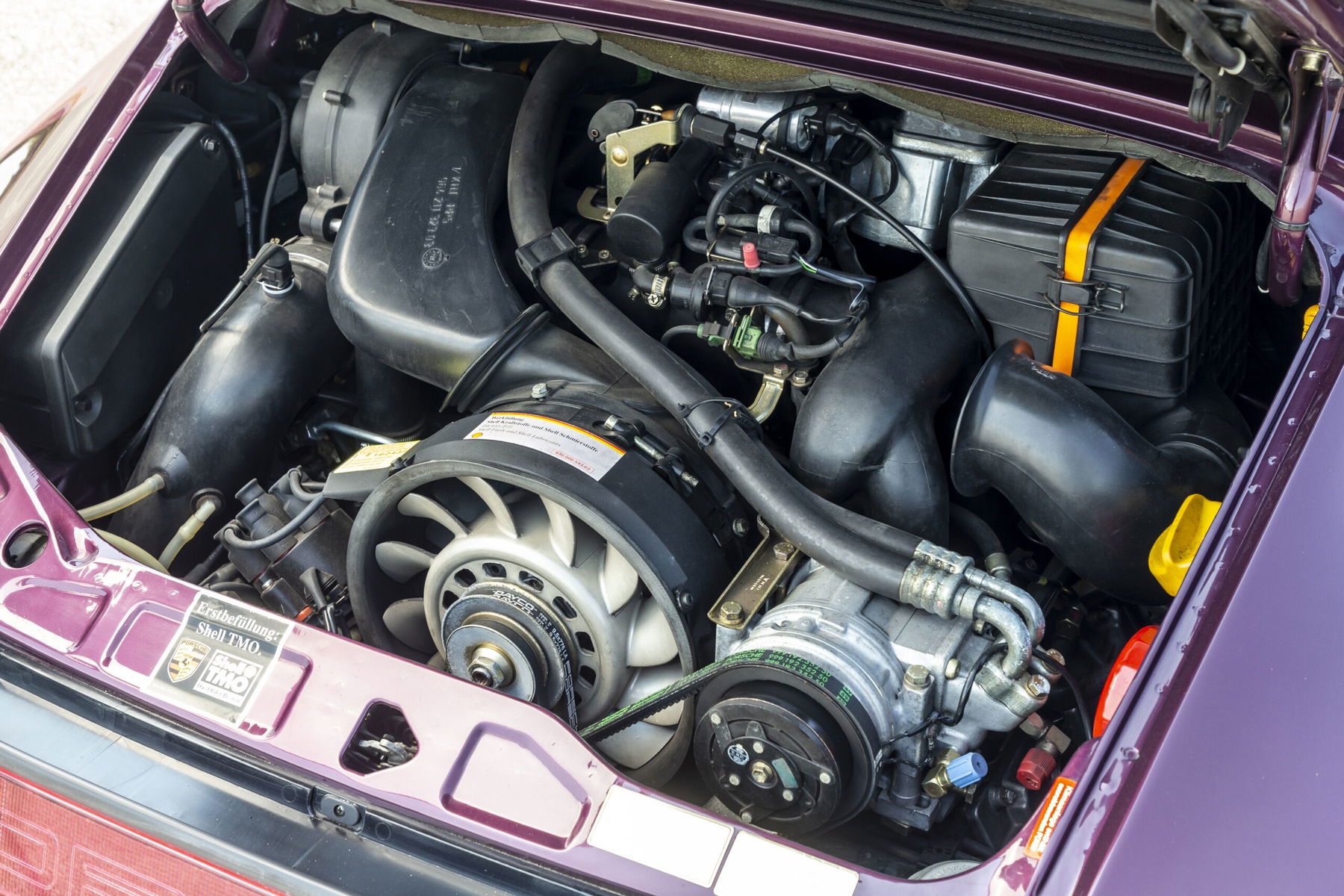
These measures enabled the six-cylinder boxer engine, with a high compression ratio of 11.3:1 for its time, to produce 250 hp at 6,100 rpm. Maximum torque of 325 Nm was available at 4,800 rpm. With minor modifications, such as optimizing the engine control unit for 98-octane fuel, this engine achieved 260 hp in the Porsche 964 Carrera RS, maintaining the same torque figures.
Many year-round drivers had long criticized the heating system in the Porsche 911. The system in the G-model, which featured sliders on the dashboard and a temperature regulator in the center console, was fundamentally redesigned in the 964. Porsche adopted the intuitive heating controls from the Porsche 944, with two rotary knobs and only two sliders on the dashboard. Additionally, the heating system responded significantly faster and provided much more heat output.
Many other detailed improvements make the Porsche 964 look much fresher, despite its largely unchanged outward appearance. For instance, the new backlit instrument lighting greatly improved legibility. The new cockpit was also equipped with a warning system that alerted the driver not only to low fuel levels but also to low washer fluid or worn brake pads.
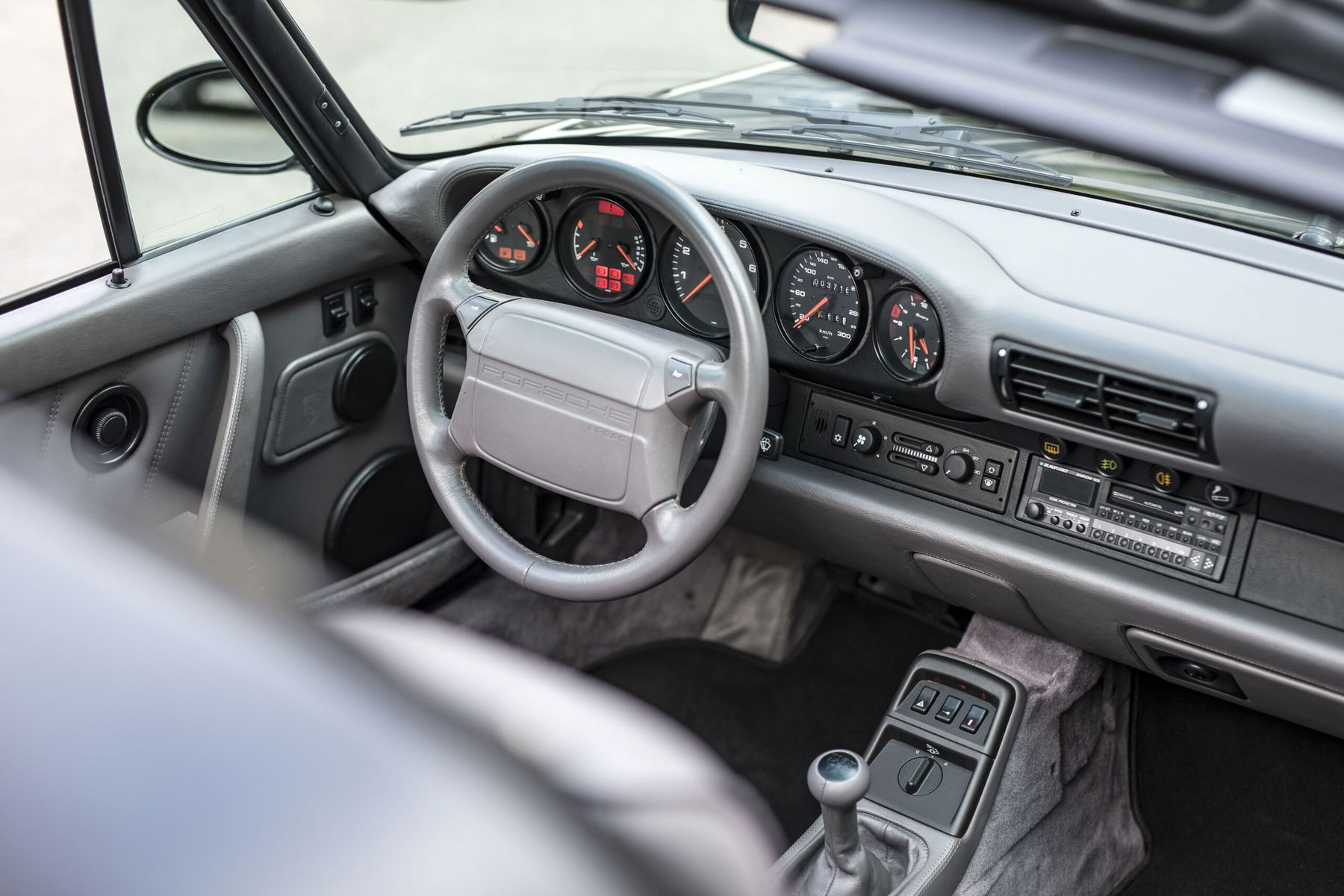
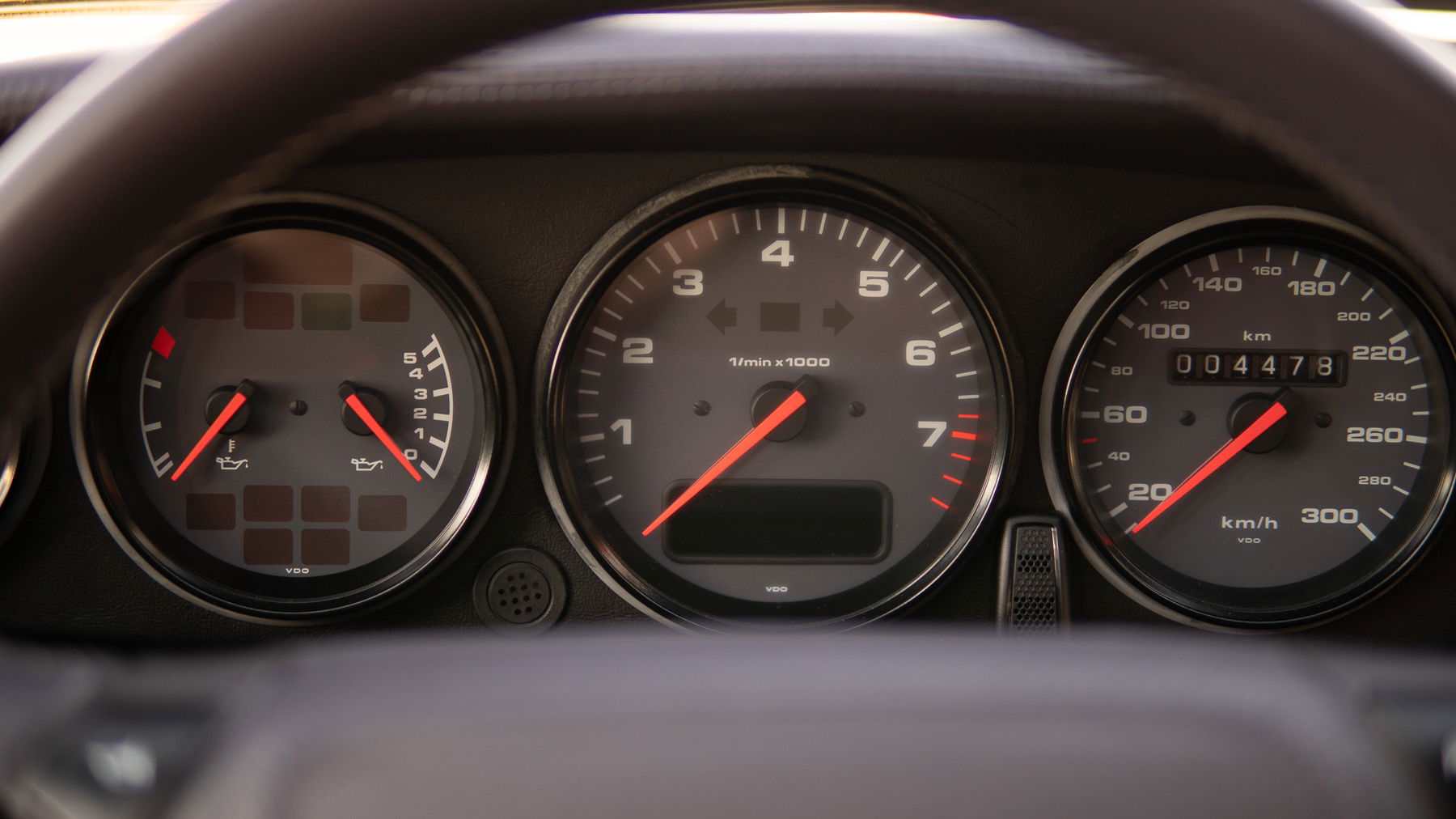
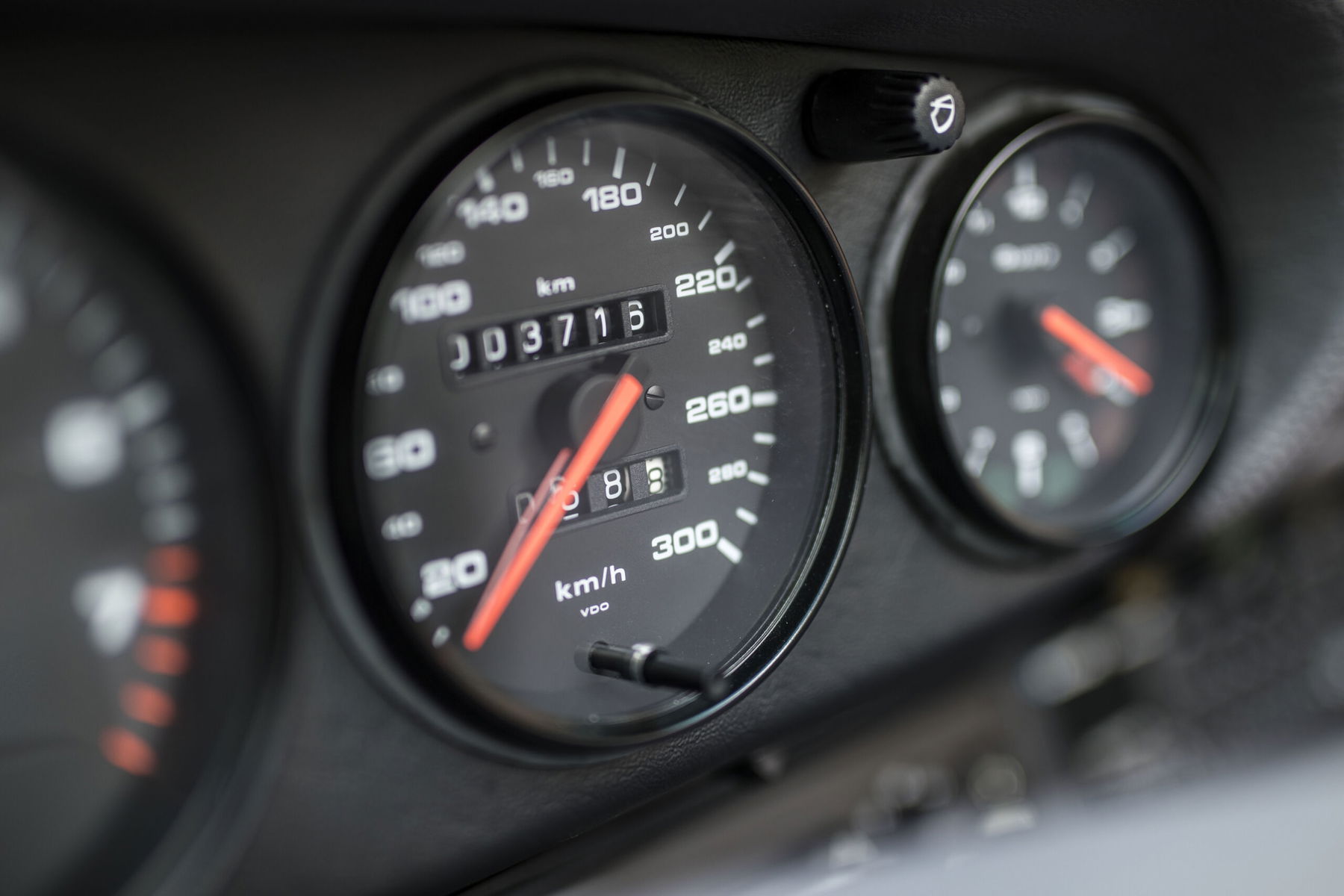
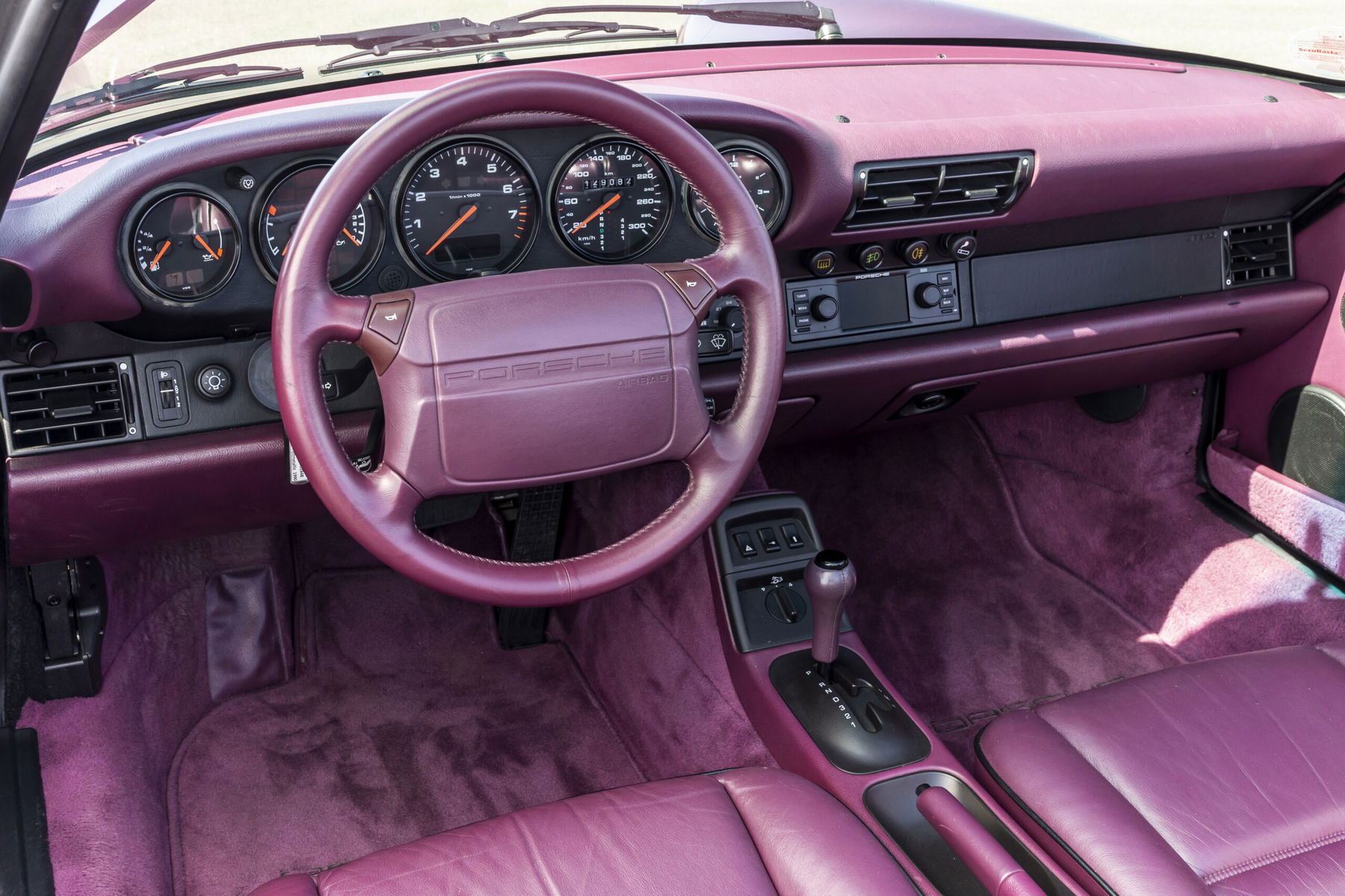
Other changes affected the gear selector. The raised center tunnel resulted in a noticeably shorter gear lever for the G50 gearbox compared to the Carrera 3.2. The Tiptronic introduced in 1990 featured a straightforward design with two parallel shift gates. Visually, the gear knob on the selector was very similar to the manual transmission’s shift lever.
When the Porsche 964 debuted in late summer 1988—Porsche’s model years started after the factory’s summer break—it was only available as the all-wheel-drive Carrera 4 Coupe with a manual transmission, priced from 114,500 DM. Its 3.6-liter M64/01 engine, producing 250 hp, accelerated the first production all-wheel-drive 911 from 0 to 100 kph in 5.7 seconds. The top speed of 260 kph matched that of the Porsche 930 Turbo 3.3, which was still on sale at the time.
It wasn’t until the second production year, starting in August 1989, that the rear-wheel-drive Porsche 911 Carrera 2 became available. At the same time, production of Cabriolet and Targa models commenced for the 1990 model year. While all-wheel-drive models were only offered with manual transmission, Carrera 2 buyers could opt for the new four-speed Tiptronic (from spring 1990). The Carrera 2 Coupe was priced at 103,500 DM with a manual transmission and 109,500 DM with Tiptronic. The Targa and Cabriolet versions were priced 5,200 and 14,500 DM more than their Coupe counterparts, respectively.
Porsche 964 Carrera 2, Targa, and Cabriolet, as well as the Tiptronic transmission, were only available starting with the 1990 model year.
As expected from Porsche, there were minor improvements as well. The flywheel in the early models was replaced with a dual-mass flywheel from Freudenberg. Engineers aimed to improve vibration damping and, consequently, reduce drivetrain noise.
In its third production year, another new model was added to the 964 lineup. With the Porsche 964 Turbo Coupé, Porsche presented the new flagship of the series. Like its predecessor, the 964 Turbo featured a wider body with flared fenders and a fixed rear spoiler. At the same time, Porsche introduced aerodynamically shaped oval mirrors.

Technically, the new 3.3-liter turbo engine was based on that of the 930. The K-Jetronic engine delivered 320 hp—20 hp and 20 Nm more than its predecessor. It accelerated to 100 kph in 5.0 seconds and reached a top speed of 270 kph. With a base price of 178,500 DM, it was 75,000 DM more expensive than the Carrera 2. However, standard equipment included a limited-slip differential, an upgraded chassis, larger perforated brake discs, and four-piston fixed calipers. Full leather interior, air conditioning, an onboard computer, and a rear wiper were also included as standard.
The Carrera models were also revised in detail for the 1991 model year. Porsche particularly improved the engine, introducing a new intake manifold for the resonance intake system, new pistons, and an updated cylinder head gasket. These changes were not aimed at increasing power but rather at improving the reliability of the engines.
The 1992 model year brought further new models. Following the overwhelming success of the new Porsche Carrera Cup among motorsport fans and customers, Porsche launched the 964 Carrera RS, a model that closely resembled the Cup car. The ingredients included a hand-welded body, a seven-kilogram lighter drivetrain with a single-mass flywheel, 10 additional horsepower, semi-rigid engine mounts, a limited-slip differential, bucket seats, door latches instead of handles, an aluminum hood, magnesium wheels, thin glass and significantly less insulation. Even the power steering and wiring harness underwent weight-saving measures.
The extreme “Rennsport” 911 weighed 1,220 kilograms, exactly 130 kilograms less than a Carrera 2 with a manual transmission. It shaved 0.4 seconds off the Carrera’s sprint time to 100 kph, achieving it in 5.3 seconds, and was two seconds faster to 200 kph. However, the more vocal and quicker responding engine combined with the significantly stiffer suspension transformed the Porsche 964 Carrera RS into an entirely different car. It was available in a base version devoid of any comfort features, a Touring version with sports seats and power windows, and an N/GT sports version homologated for street use.
Porsche’s model offensive also included a Cabriolet in the wide Turbo-look, the Porsche 964 Carrera 2 Cabriolet WTL (works Turbo-look). This open-top, wide 911 featured the large Turbo brakes, suspension, and wheels from the 911 Turbo. Buyers could choose between a manual transmission and Tiptronic. In the U.S., this model was sold as the 964 America Roadster, a limited-edition special model of 250 units.
Another extreme Porsche was unveiled at the Geneva Motor Show: the Porsche 964 Turbo S Lightweight. The nearly 300,000 DM Turbo 911 featured a flatter rear spoiler, side air intakes, and brake cooling inlets in place of fog lights. Additionally, the Turbo S Lightweight was the first to feature three-piece Speedline wheels.
To live up to its Lightweight name, Porsche used plastic for the doors and hoods, reducing the car’s weight to 1,290 kilograms. By comparison, the standard 911 Turbo weighed 1,470 kilograms. Extensive engine modifications, such as increased boost pressure, specially tuned camshafts, and optimized ignition and injection systems, enabled the 3.3-liter turbo engine to deliver 381 hp. The 290 kph Turbo S Lightweight accelerated from 0 to 100 kph in 4.6 seconds and reached 200 km/h almost five seconds faster than the Carrera RS, achieving it in just 14.2 seconds. Only 86 units were built in total.
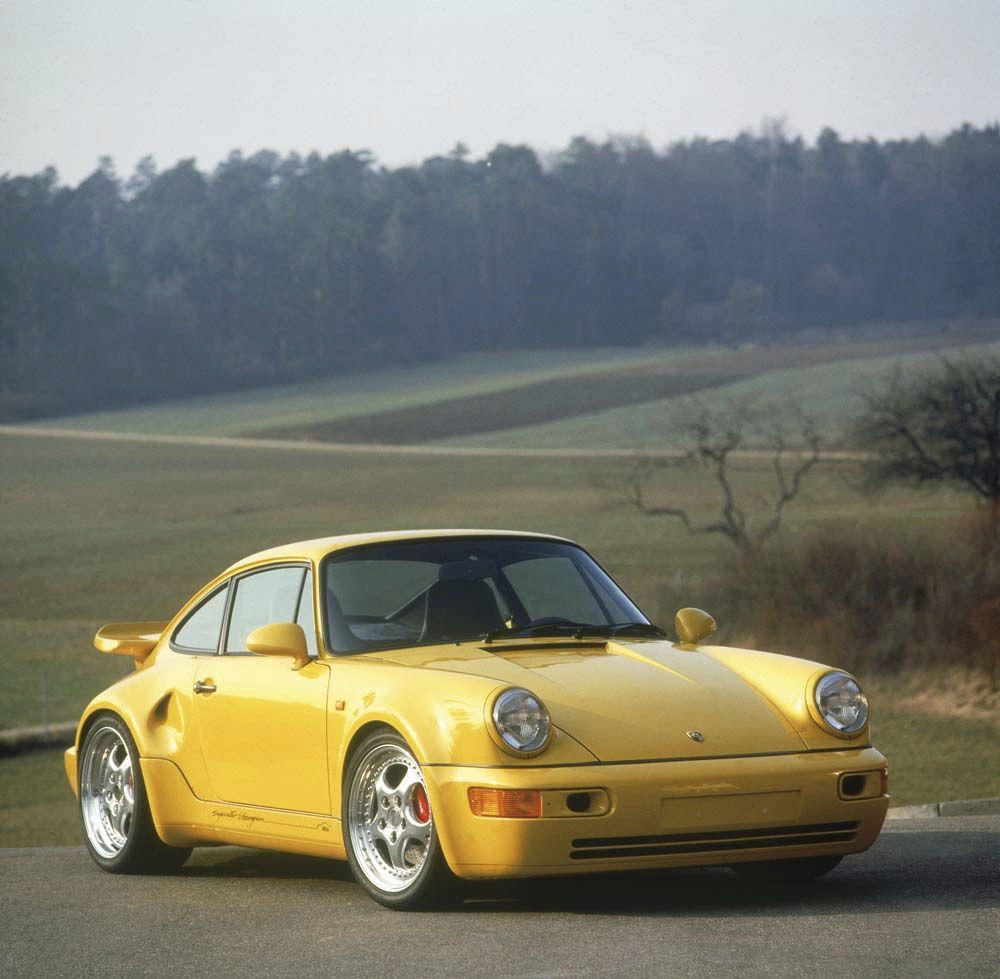
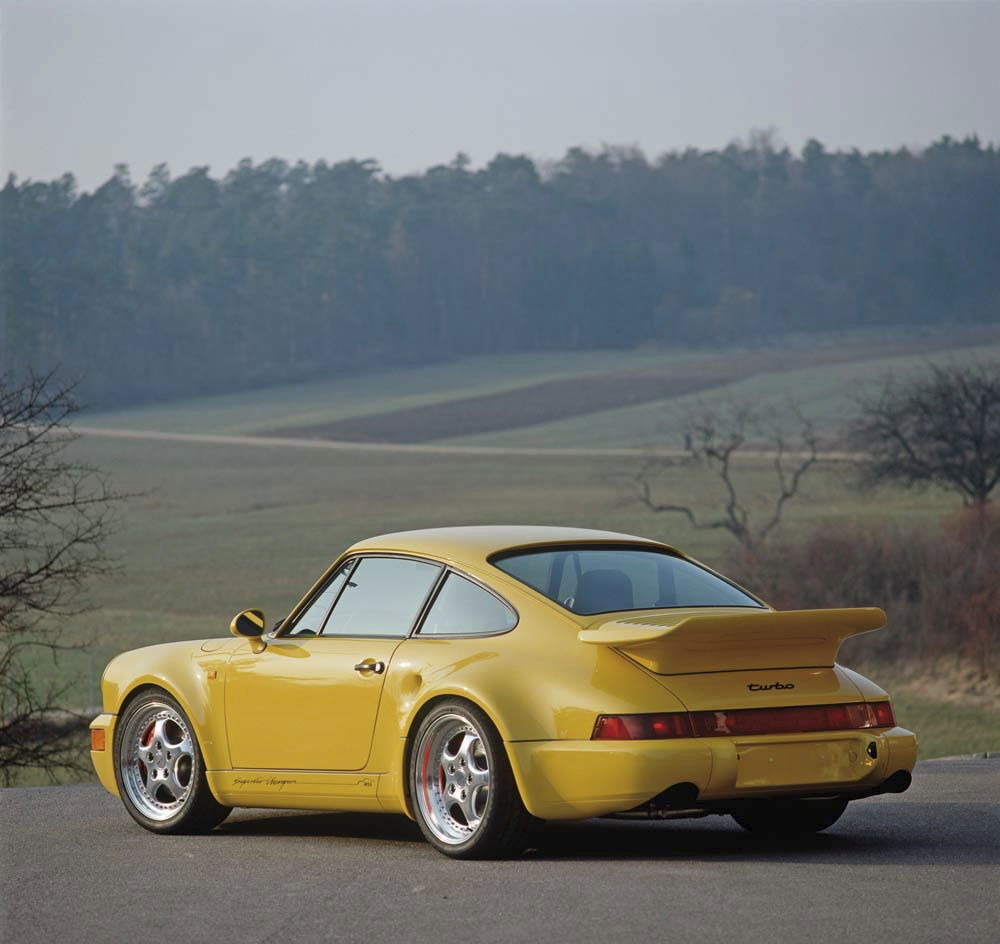
From the 1992 model year, the factory performance upgrade (WLS) was also available for the Porsche 964 Turbo. With modified valve timing, adapted cylinder heads, and adjusted intake manifolds, Porsche increased the Turbo’s output to 355 hp. The WLS kit could also be retrofitted through Porsche Exclusive. In 1992, Porsche Exclusive also produced a small series of six 964 Turbo Cabriolets. Additionally, 20 964 Turbo S2 models were built for homologation purposes, so they could enter the American IMSA racing series.
With the Porsche 964 Turbo 3.6, Porsche introduced a thoroughly revised Turbo for its final model year, despite the 993 successor being on the horizon. Based on the 3.6-liter M64 engine, Porsche developed a new turbocharged engine. Delivering 360 hp and 520 Nm of torque, the Turbo 3.6 surpassed its predecessor by 40 hp and 70 Nm. However, it still relied on the aging KE-Jetronic with no electronic boost control. Externally, Porsche only changed the badging and the rear center section, which was borrowed from the Carrera RS, and opted for three-piece Speedline wheels.
Another farewell model was the 964 Speedster, built during the final model year. Essentially, it was a narrow-bodied Carrera featuring the distinctive low windshield, the iconic humps of the soft-top cover, and the Carrera RS’ bucket seats. It was only available as a Carrera 2 with rear-wheel drive and could be ordered with either a manual transmission or Tiptronic. Reportedly, 15 Speedsters were converted to Turbo-look by Porsche Exclusive.
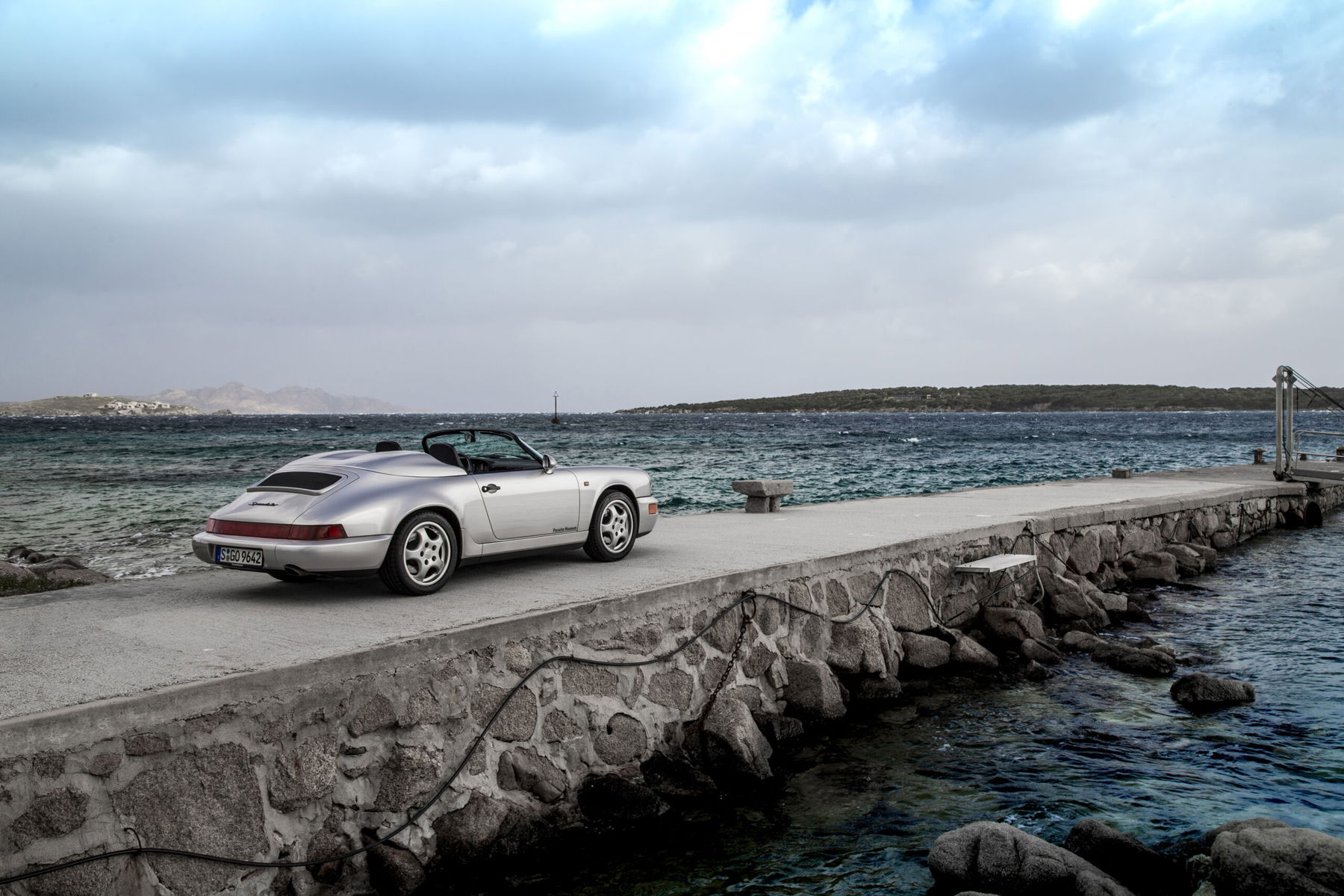
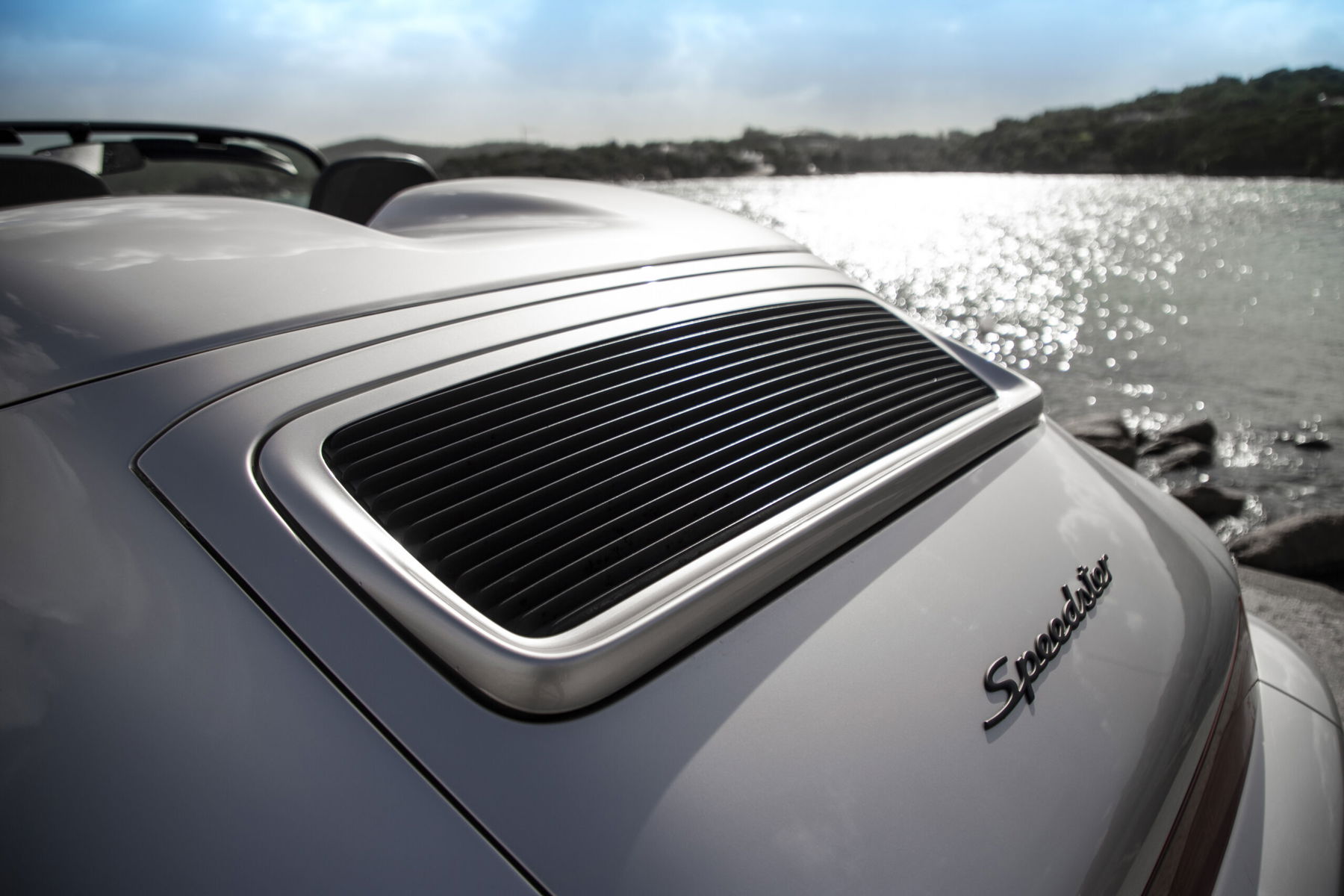
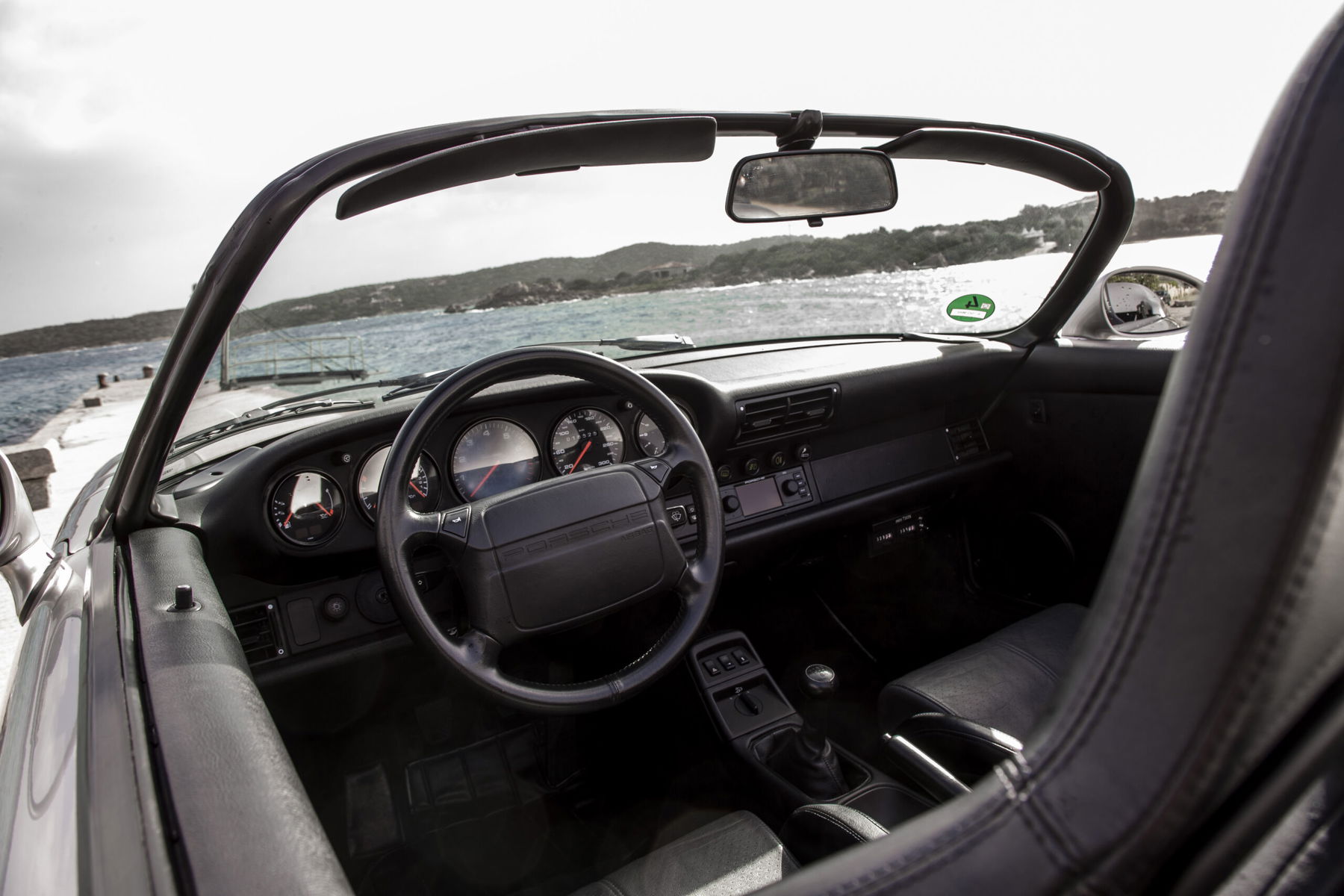
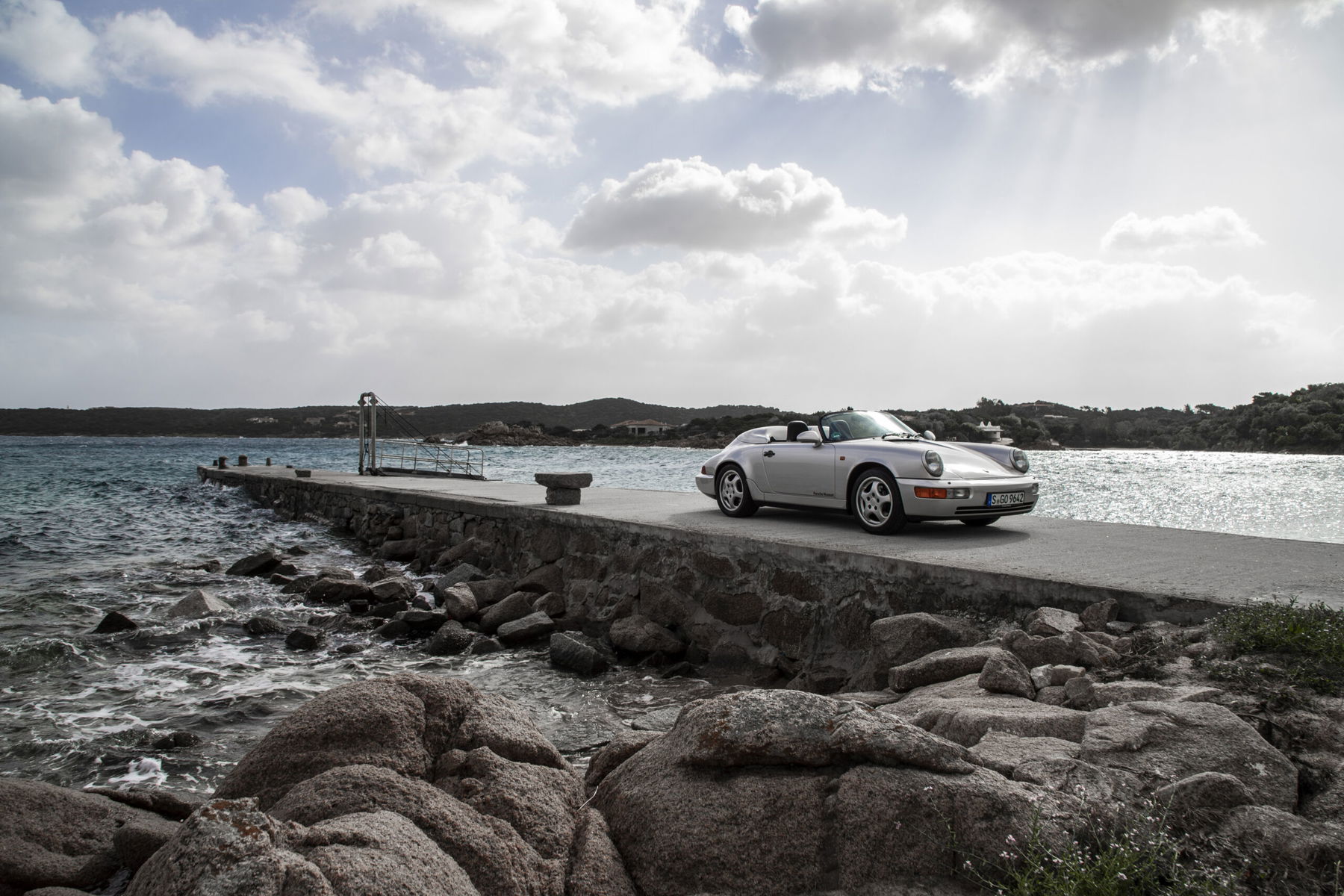
Porsche also introduced the 911 RS America. This was meant to bring American customers closer to some RS features. Contrary to its nomenclature, it was not an RS adapted for the American market. Instead, the RS America was a Carrera 2 Coupe with fixed rear spoilers resembling the old Carrera 3.2 style, 17-inch Cup wheels, and RS door panels and seats, shedding 10 kilograms in the process.
But that wasn’t all. To celebrate the 30th anniversary of the 911, Porsche launched a special edition based on the 964 Carrera 4, the Porsche 964 “30 Years 911” Anniversary Model. It featured wide fenders, 964 Turbo suspension and brakes and was only available in Viola Metallic, Silver Metallic, and Amethyst Metallic. The “Jubi” model was adorned with a Rubicon Grey full leather interior. A numbered plaque on the rear shelf highlighted its limited production status. Porsche produced only 911 units.
While the Zuffenhausen engineers developed the Porsche 964 Carrera RS as a relatively lightweight, narrow-bodied motorsport vehicle, a new homologation model was required for the newly created GT category in motorsport. Consequently, Porsche’s motorsport division in Weissach handcrafted the Porsche 964 Carrera RS 3.8. The wide-bodied RS 3.8 immediately stood out with its Speedline wheels, front spoiler extensions, and large rear wing. Porsche increased the engine’s displacement to 3.8 liters through a two-millimeter larger cylinder bore. Combined with lighter rocker arms, a modified exhaust system, and individual throttle bodies, the M64/04 engine produced 300 hp at 6,500 rpm. Only 55 units of the 1,210-kilogram RS 3.8 were built.
Porsche also launched the 911 Turbo 3.6 Flatnose or Slantnose in 1993. They equipped the 964 Turbo 3.6 with redesigned front fenders and a lower nose profile. The Japanese Flatnose models retained the classic pop-up headlights, while Porsche Exclusive installed headlights from the Porsche 968 for all other markets. Other distinguishing features of the Flatnose compared to the regular Turbo 3.6 included the air intakes from the Turbo S Lightweight and a rear spoiler, whose design later influenced the 993 Turbo. The Japanese models featured intakes reminiscent of the 930 Turbo S. Only 76 units of the 385 hp Flatnose were built, including ten Japanese 964 Turbos with code X83.
Although the launch date for the Porsche 993 had already been set, Porsche also made updates to the Porsche 964 Carrera 2. The flywheel was replaced once again. Persistent issues with the dual-mass flywheel from Freudenberg led Porsche to use the LUK dual-mass flywheel, which had been proven in the Turbo since 1991, for the 964 Carrera 2 from the 1993 model year onward. Carrera 4 customers had to make do with the old flywheel.
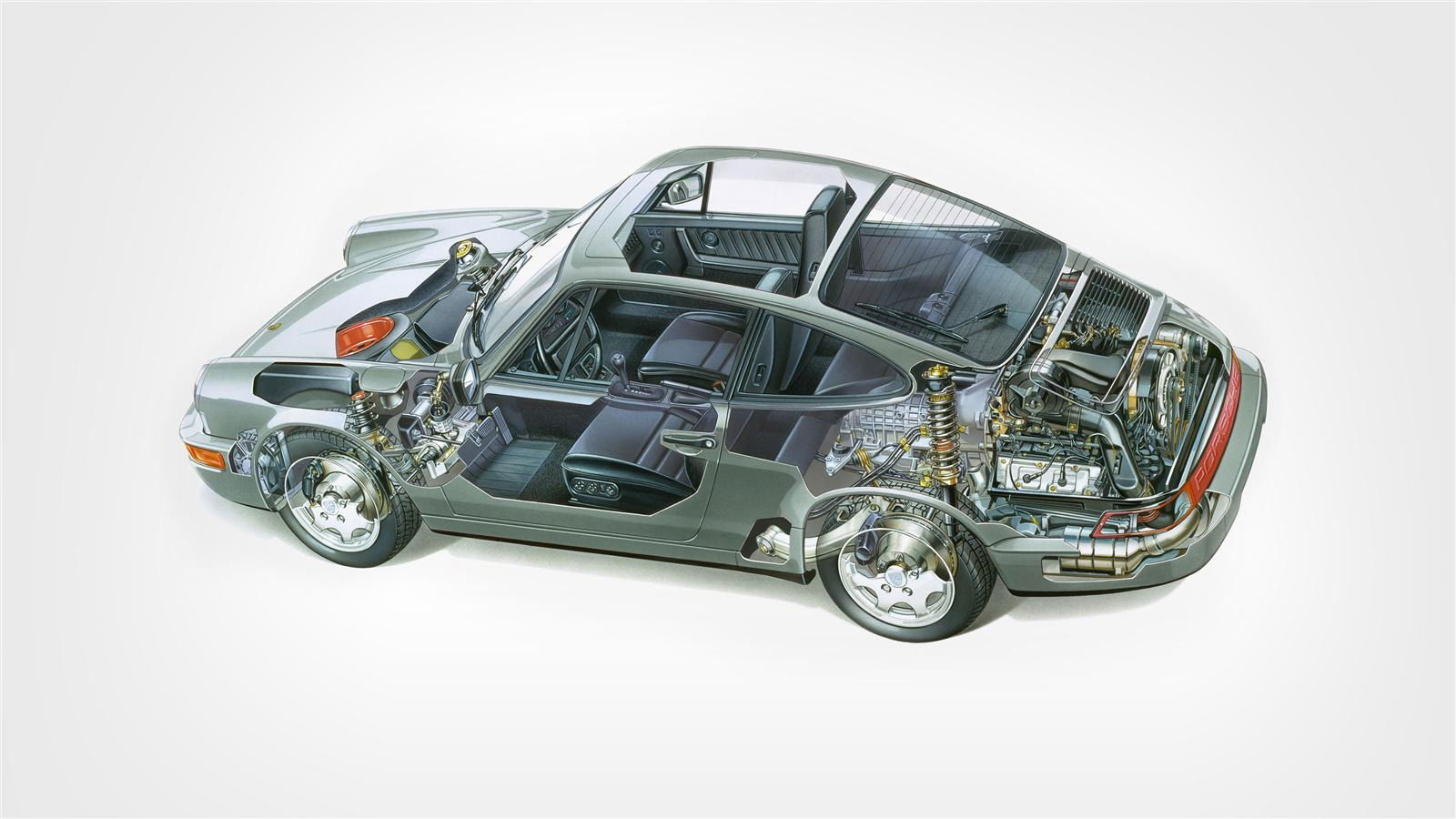
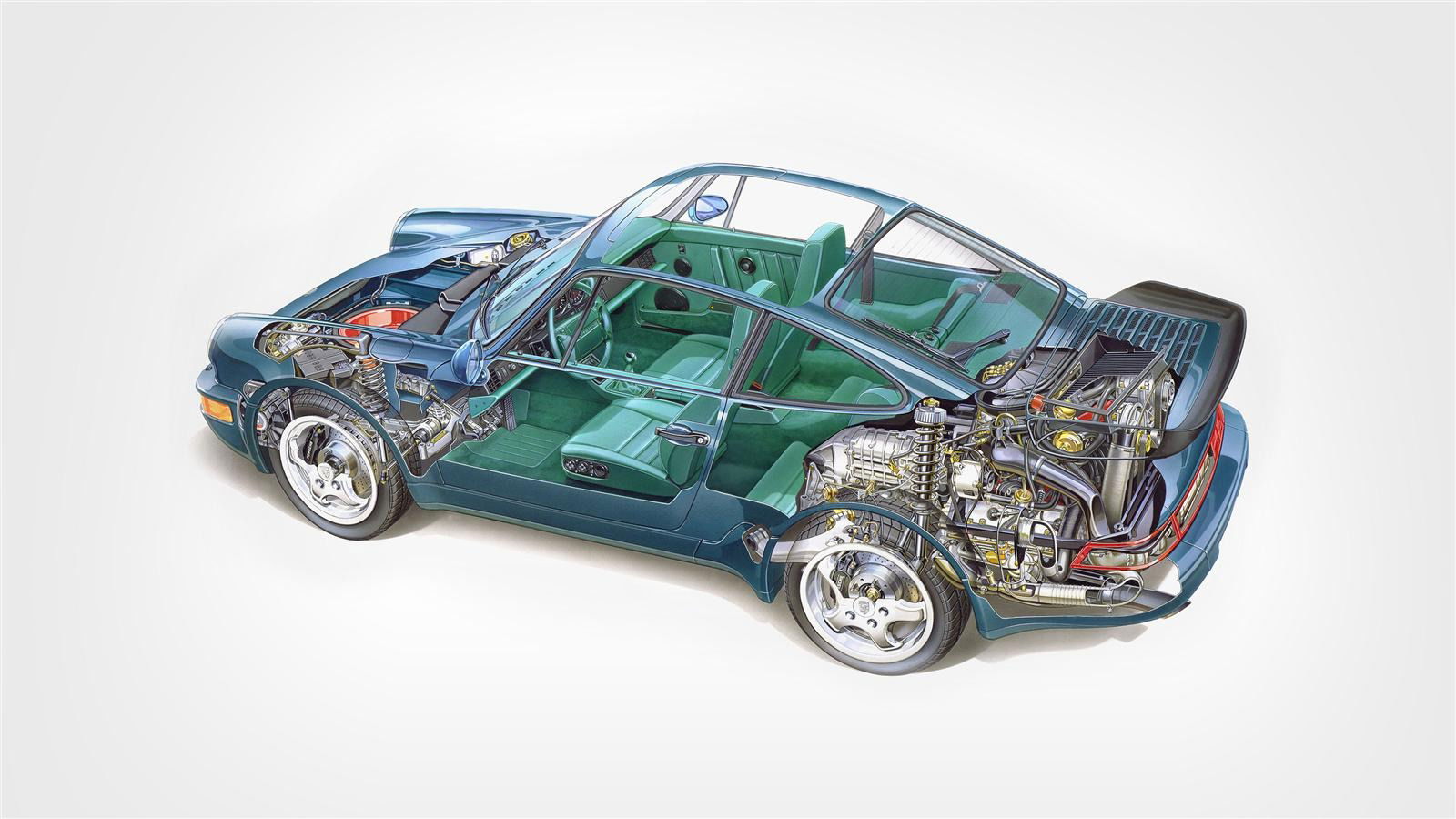
In 1990, a racing car based on the Porsche 964 Carrera, named the 964 Cup, replaced the 944 Turbo Cup in Porsche’s one-make series. The 265-hp cars featured a roll cage, significantly lowered suspension, and racing ABS. In its debut season, drivers engaged in hard-fought wheel-to-wheel battles, many of which are still viewed millions of times on YouTube today. Olaf Manthey claimed the championship in the inaugural season. The world’s fastest one-make series is still known as the Carrera Cup today.
The Porsche Carrera Cup and Supercup witnessed thrilling action. Even renowned guest drivers like Walter Röhrl showcased their skills in Porsche’s one make cup.
The 964 also proved itself in competition against other manufacturers. In 1993, four Porsche 964 Carrera RSR 3.8 cars claimed the top four positions at the 24 Hours of Nürburgring. Porsche also achieved a class victory at Le Mans with the RSR, marking the 911’s return to the legendary circuit after nearly a decade.
In the North American IMSA Supercar Series, modified Porsche 964 Turbo S2 cars competed. From 1991 to 1993, Porsche achieved outstanding results, winning the manufacturers’ title in all three years.
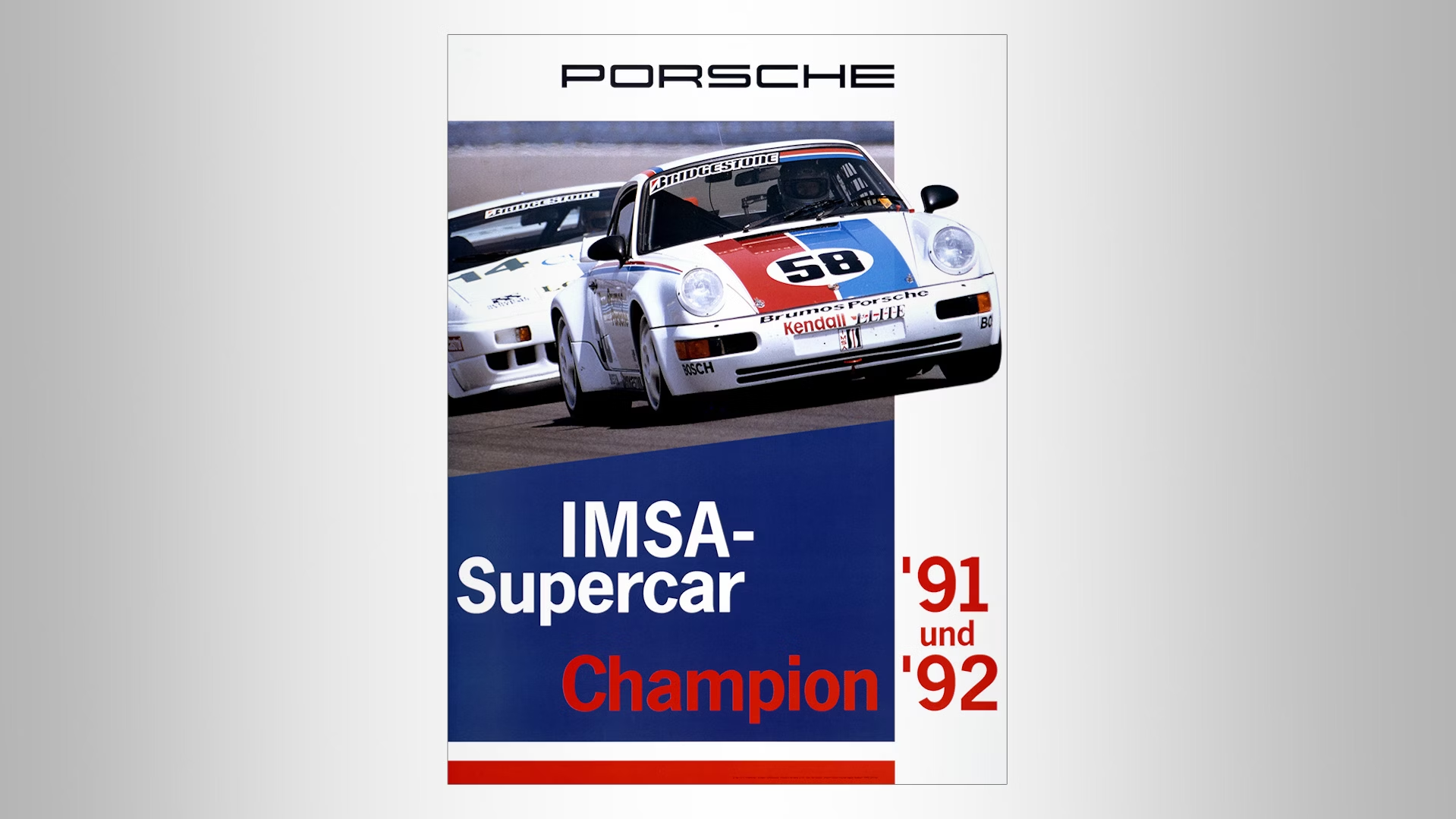
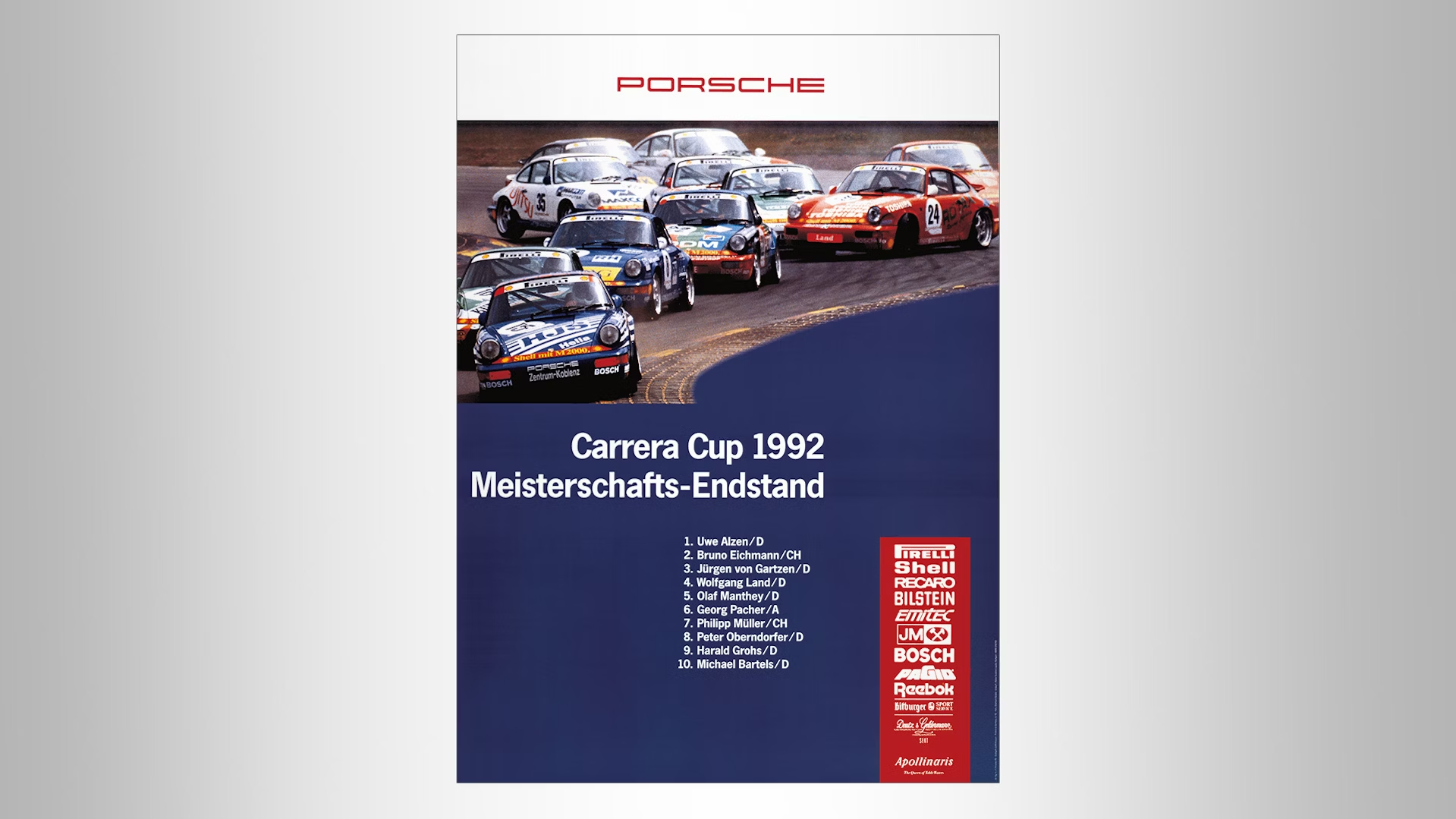
The Porsche 964 had some of its most famous appearances as a movie car. Its first major role came in 1995 when a Porsche 964 Turbo 3.6 was featured as the service vehicle of Will Smith and Martin Lawrence in Bad Boys. The black Turbo 911, which belonged to director Michael Bay at the time, became an overnight cult figure. Reportedly, Bay sold the car to a friend for $60,000. In 2022, this very car was auctioned for $1.3 million.
Another black Porsche 964 Turbo 3.6 also left its mark on Japanese manga culture. In the popular comic adaptation Wangan Midnight, a series about nocturnal street races on Japanese highways, a black 964 played a central role. For protagonist Akio, the “Blackbird” Porsche 964 Turbo 3.6 was the ultimate rival, repeatedly proving an insurmountable challenge in the races.
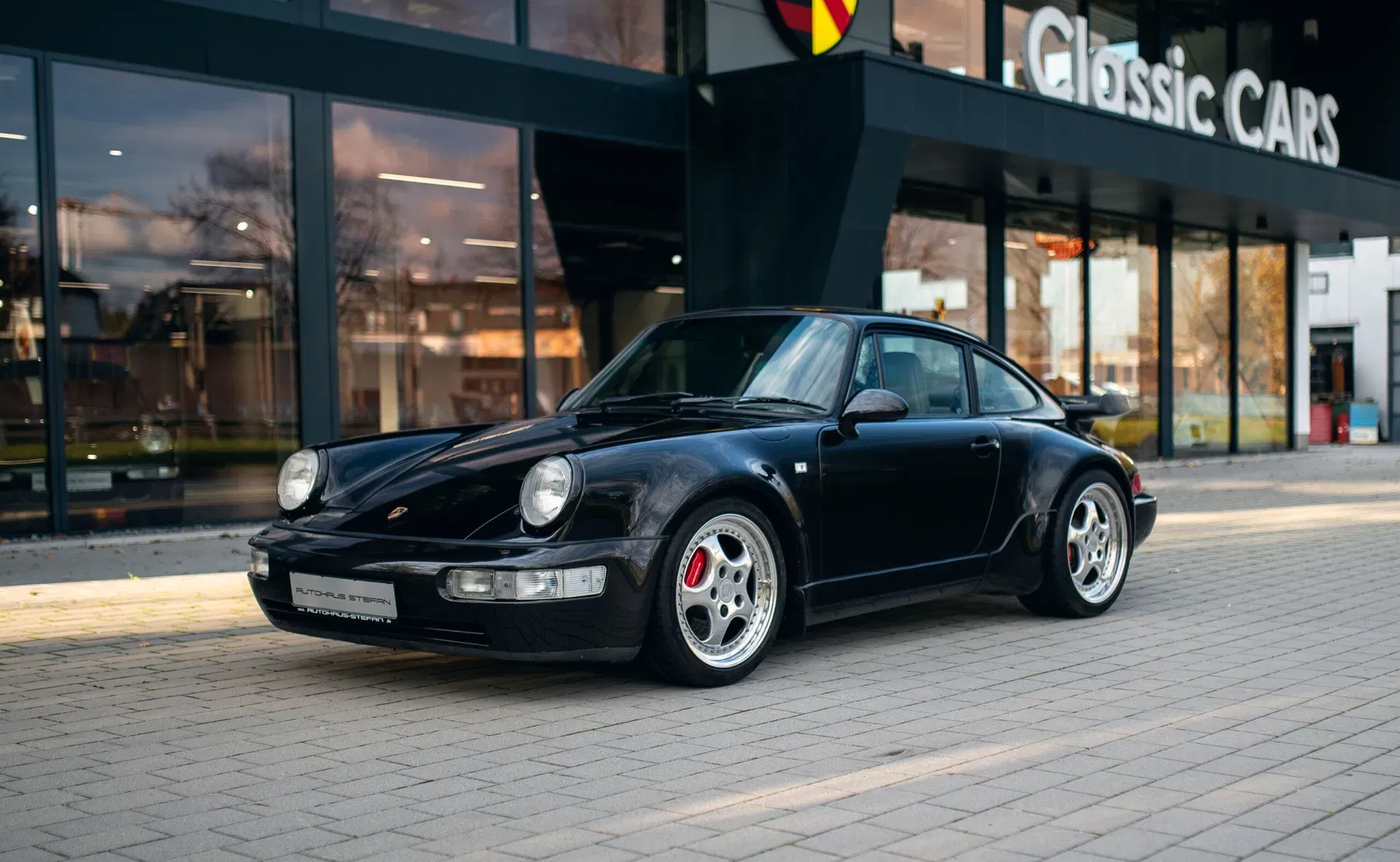
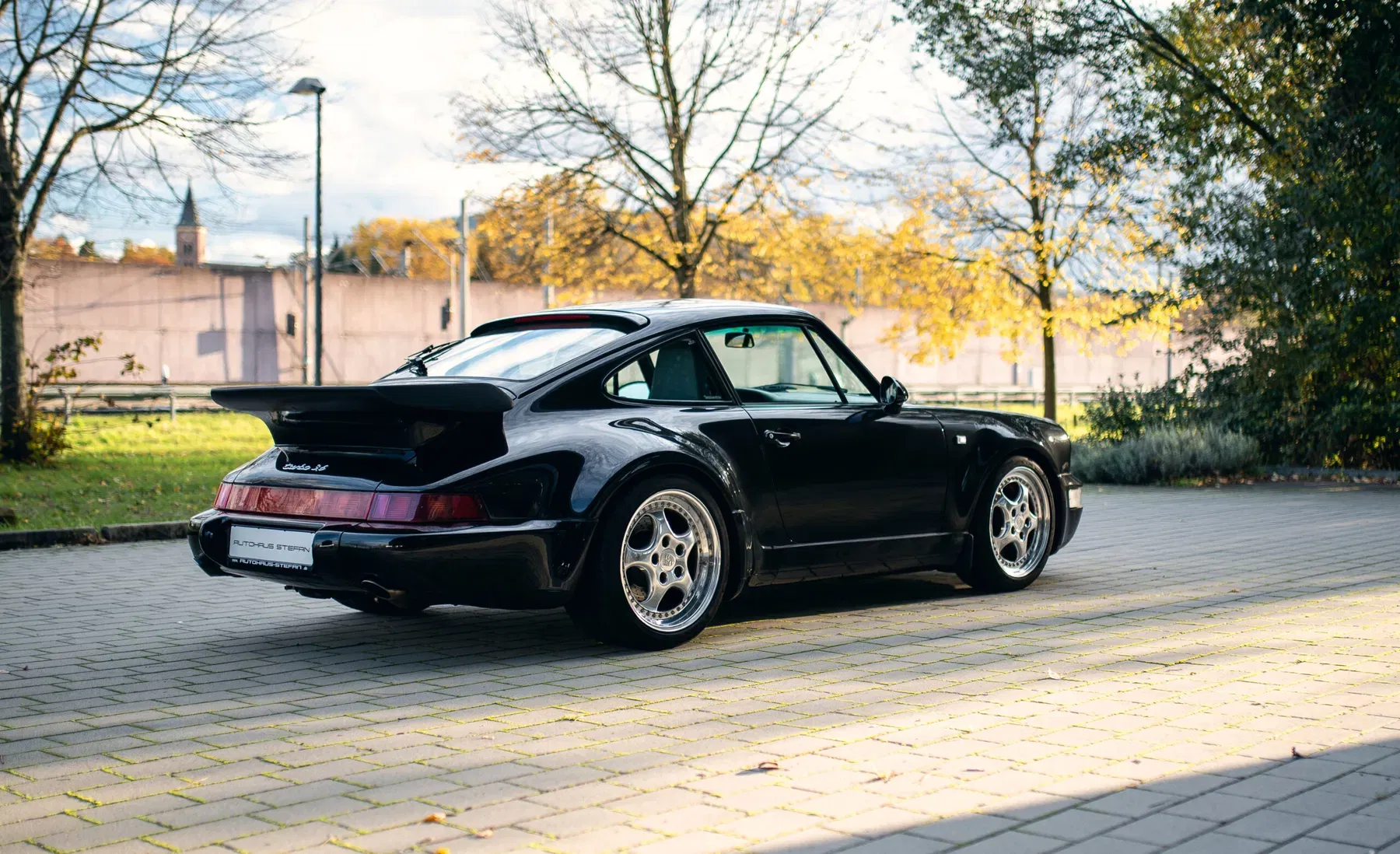
A somewhat battered Porsche 964 Cabriolet also gained a degree of cult status through its appearances on television. In the series Californication, lead actor David Duchovny, in his role as the alcoholic writer and womanizer Hank Moody, drove a dilapidated 964. The black Cabriolet — now known as the “Hank Moody Porsche” — appeared in numerous episodes with a broken headlight, among other damages.
In collaboration with the advertising agency Jung von Matt, Porsche created some of the most iconic advertising posters in automotive history in the early 1990s. The subtle messages ranged from celebrating the 911 as the ideal family car for faster commutes to highlighting its addictive allure.
For over 100 years, cars have offered independence. One makes you dependent.
Porsche advertisement for the 964 Anniversary Model “30 Years 911”
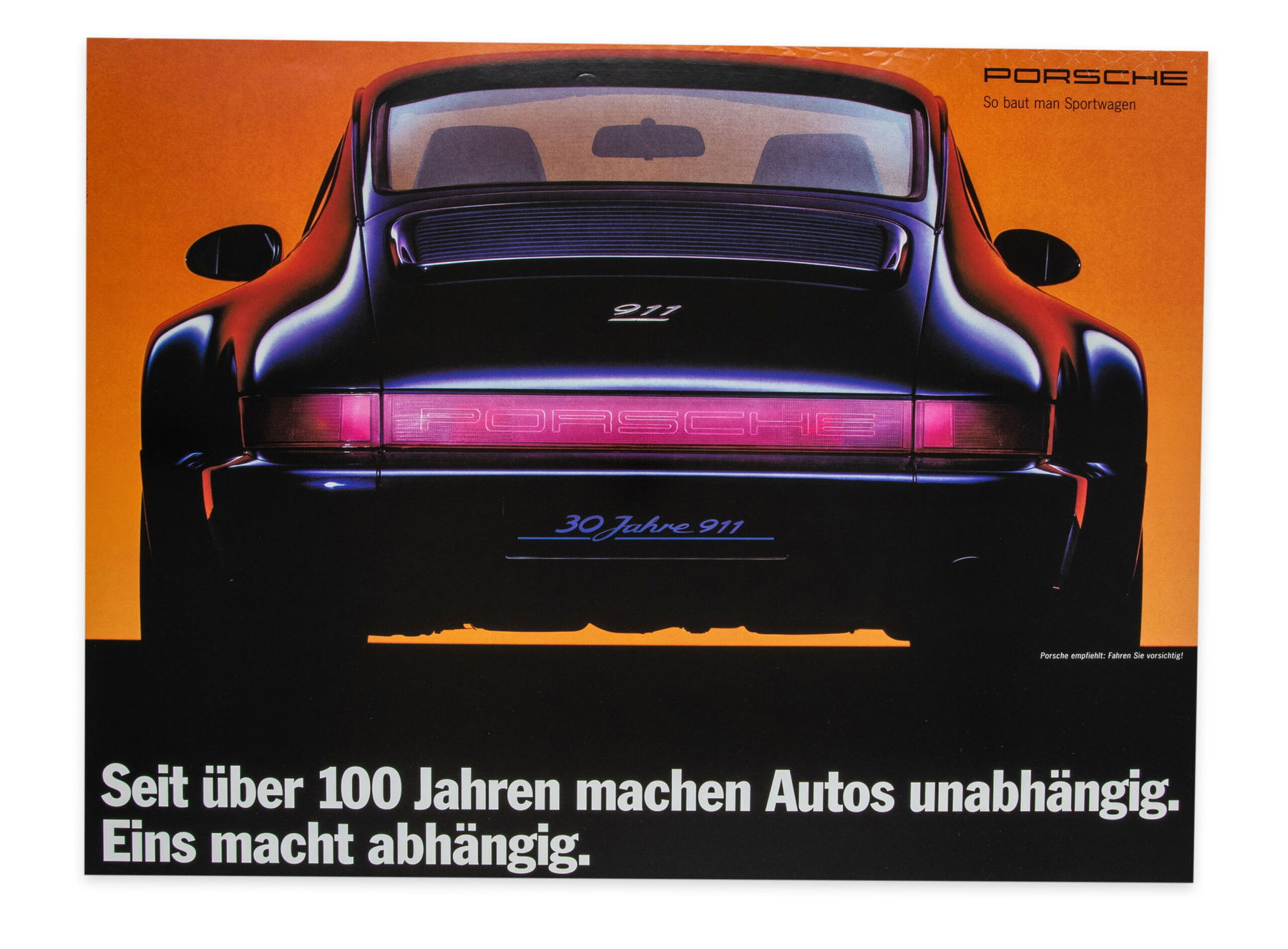
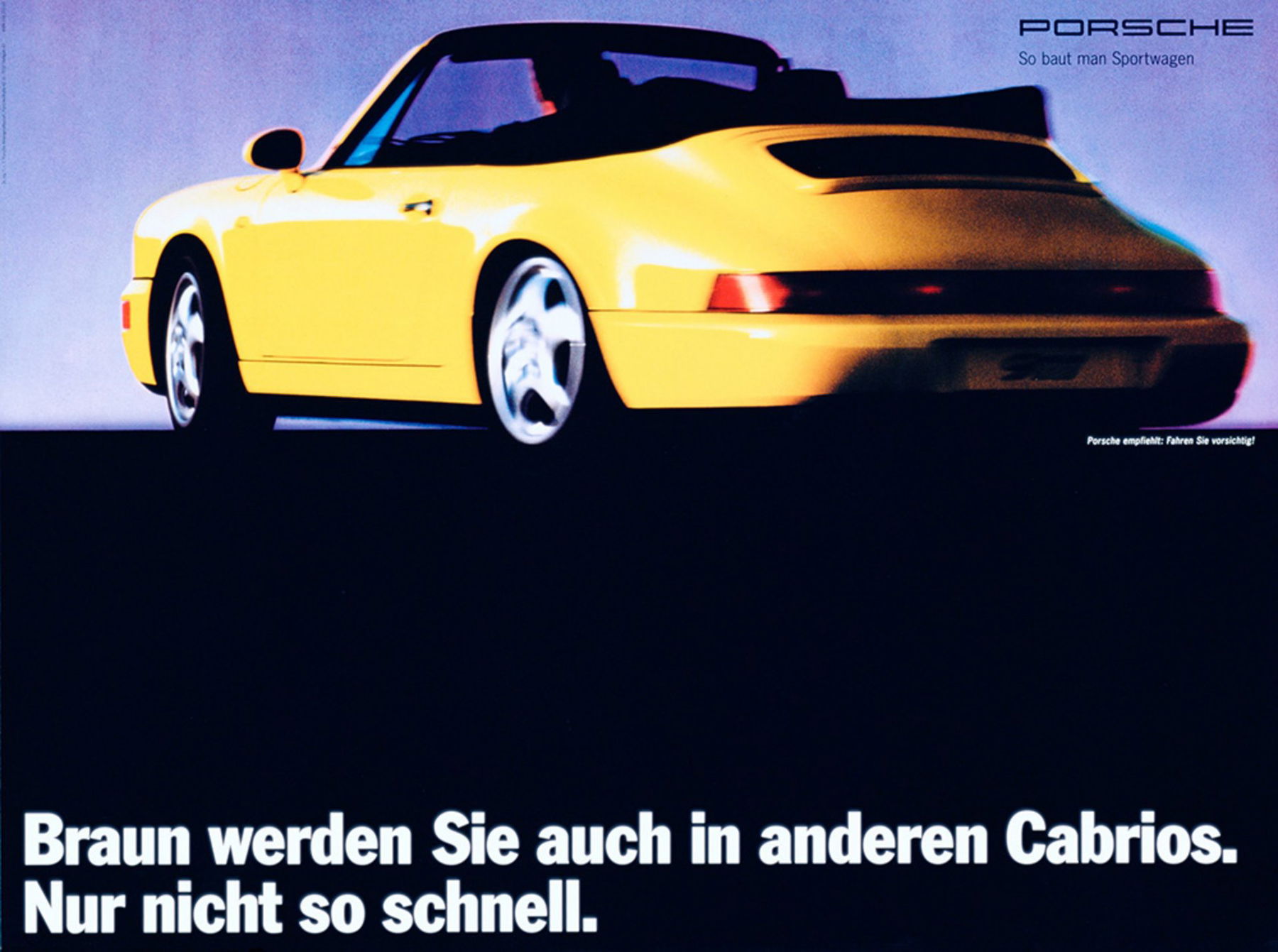
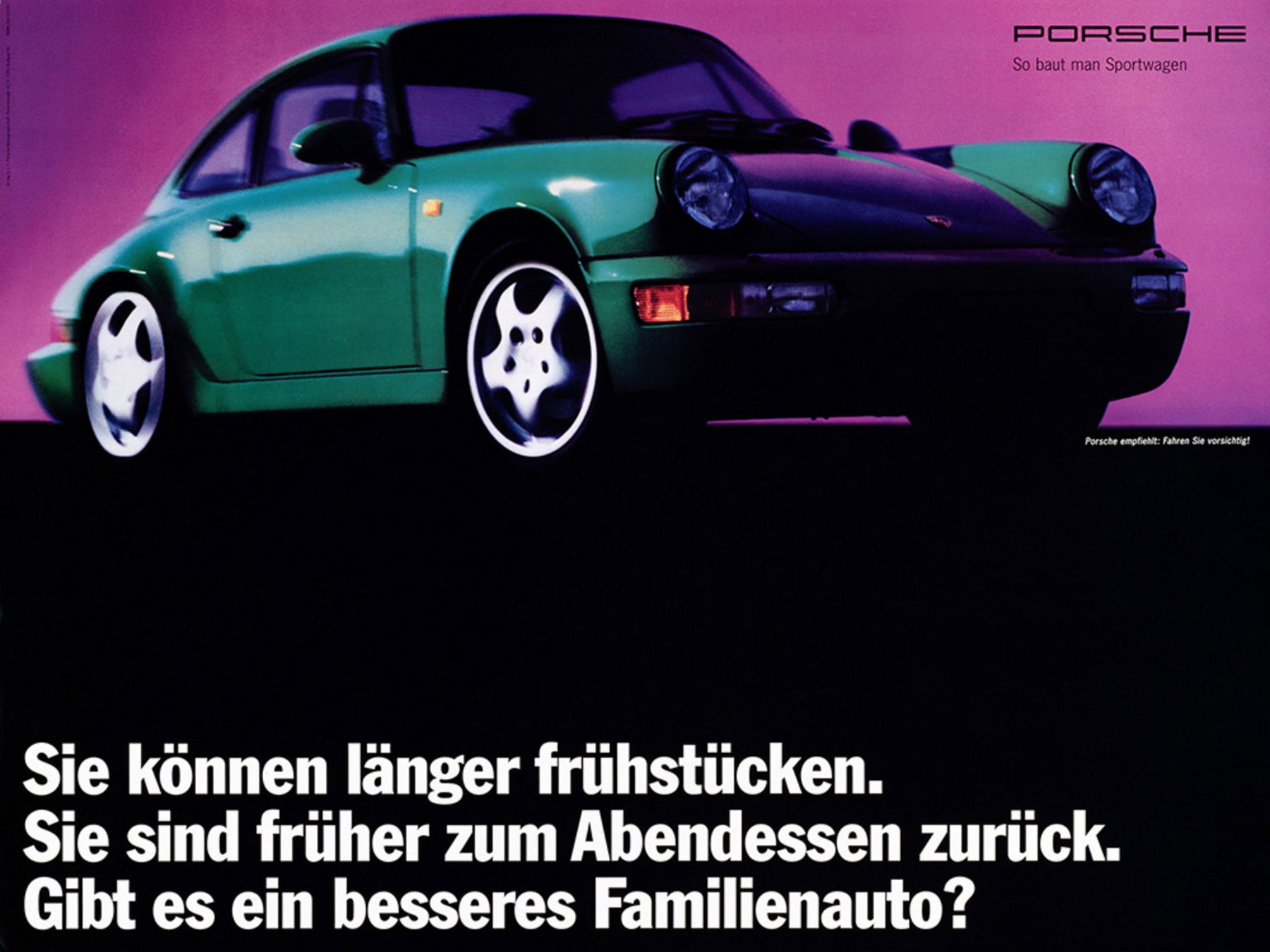
© Images: Porsche AG, unless otherwise stated
Elferspot magazine